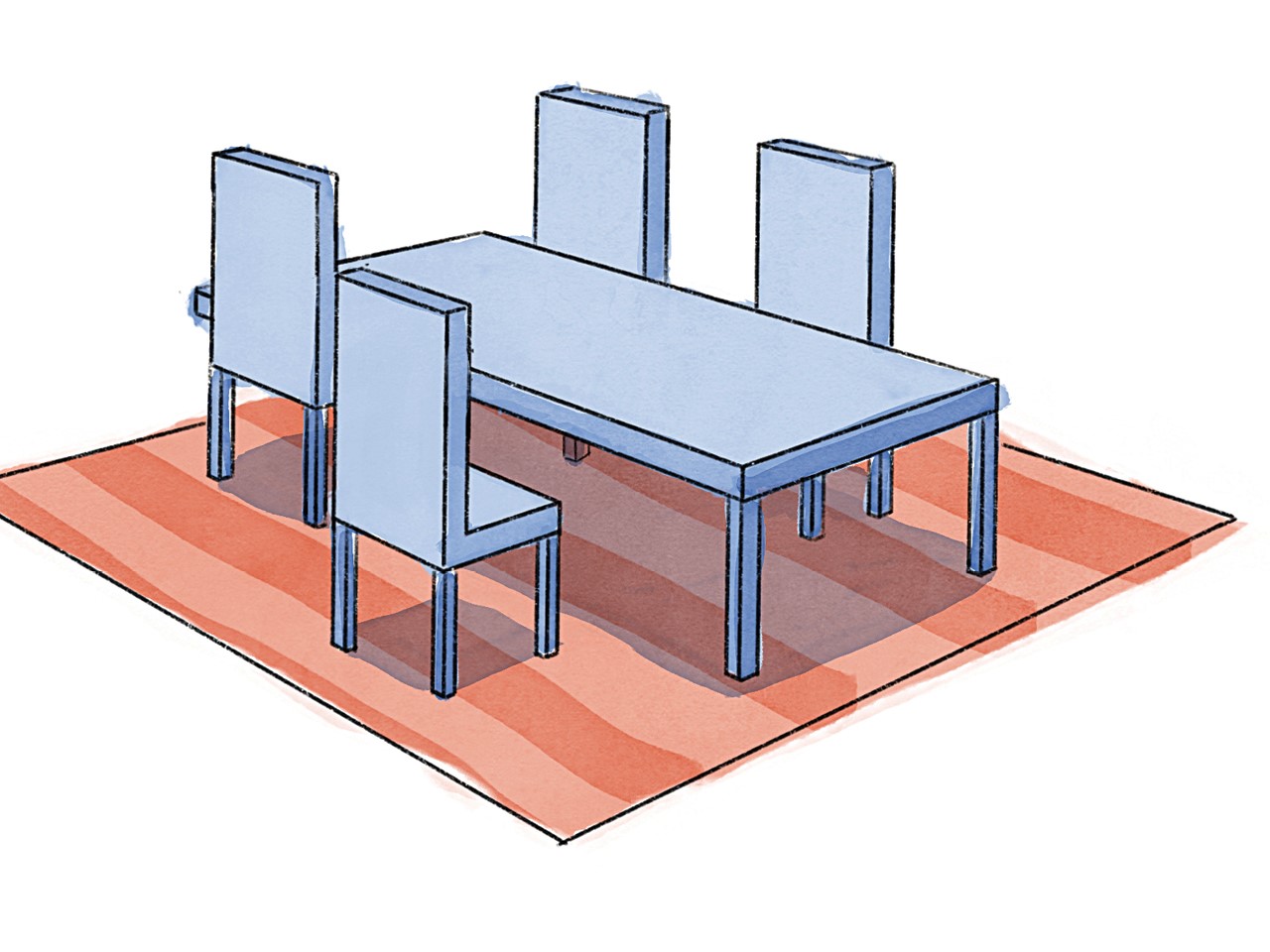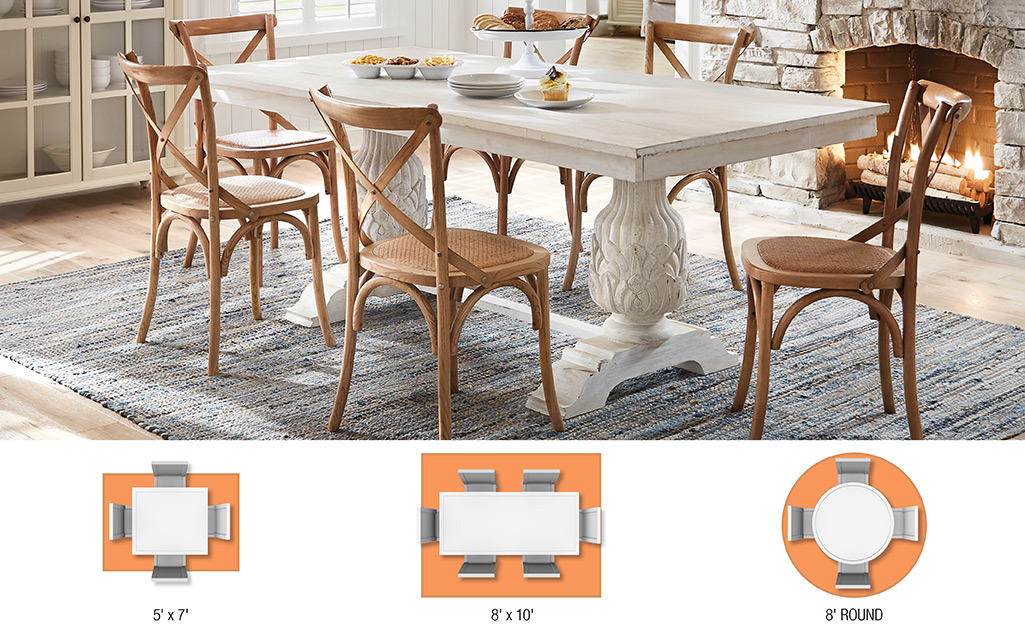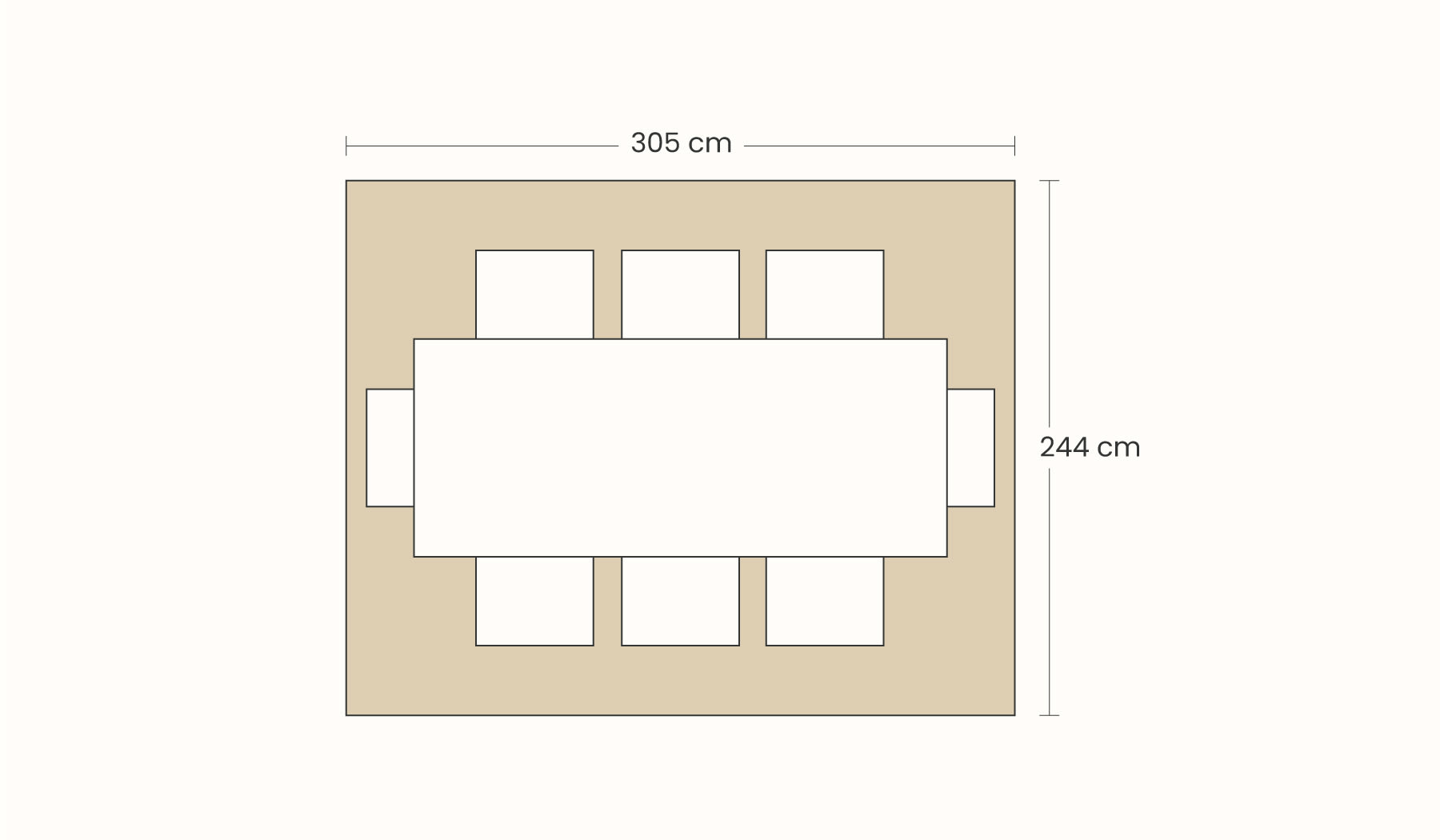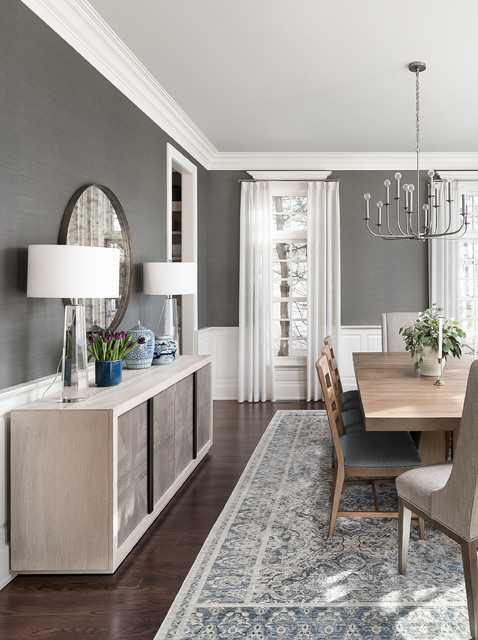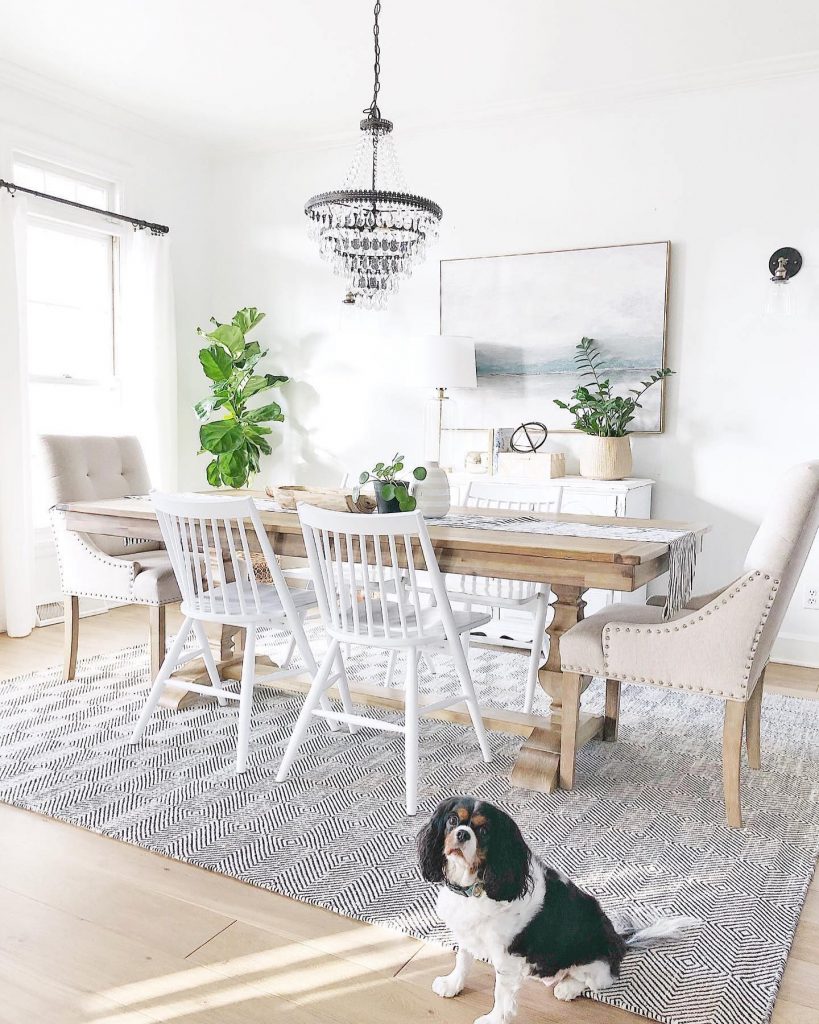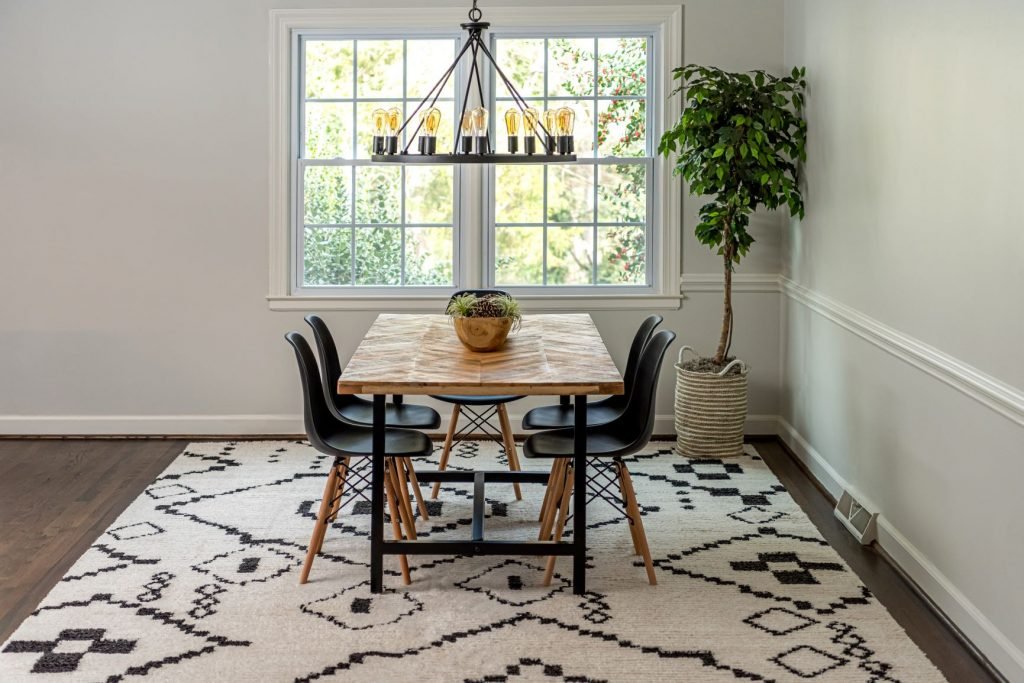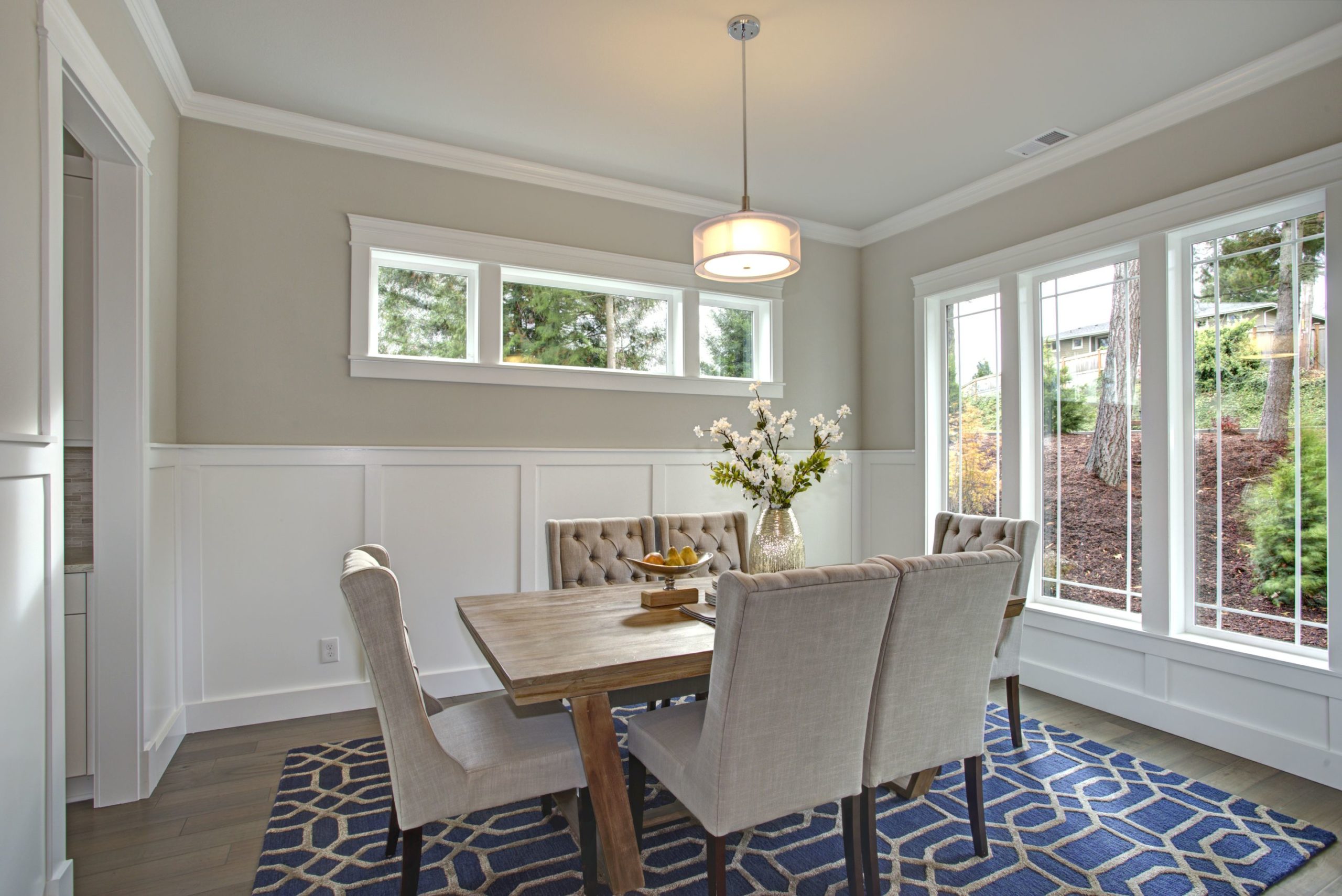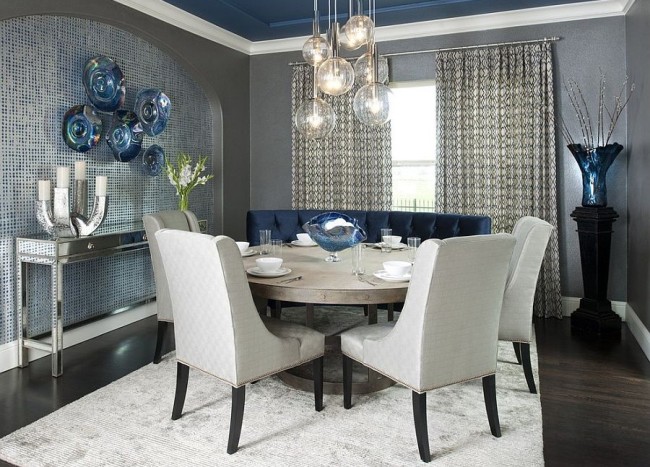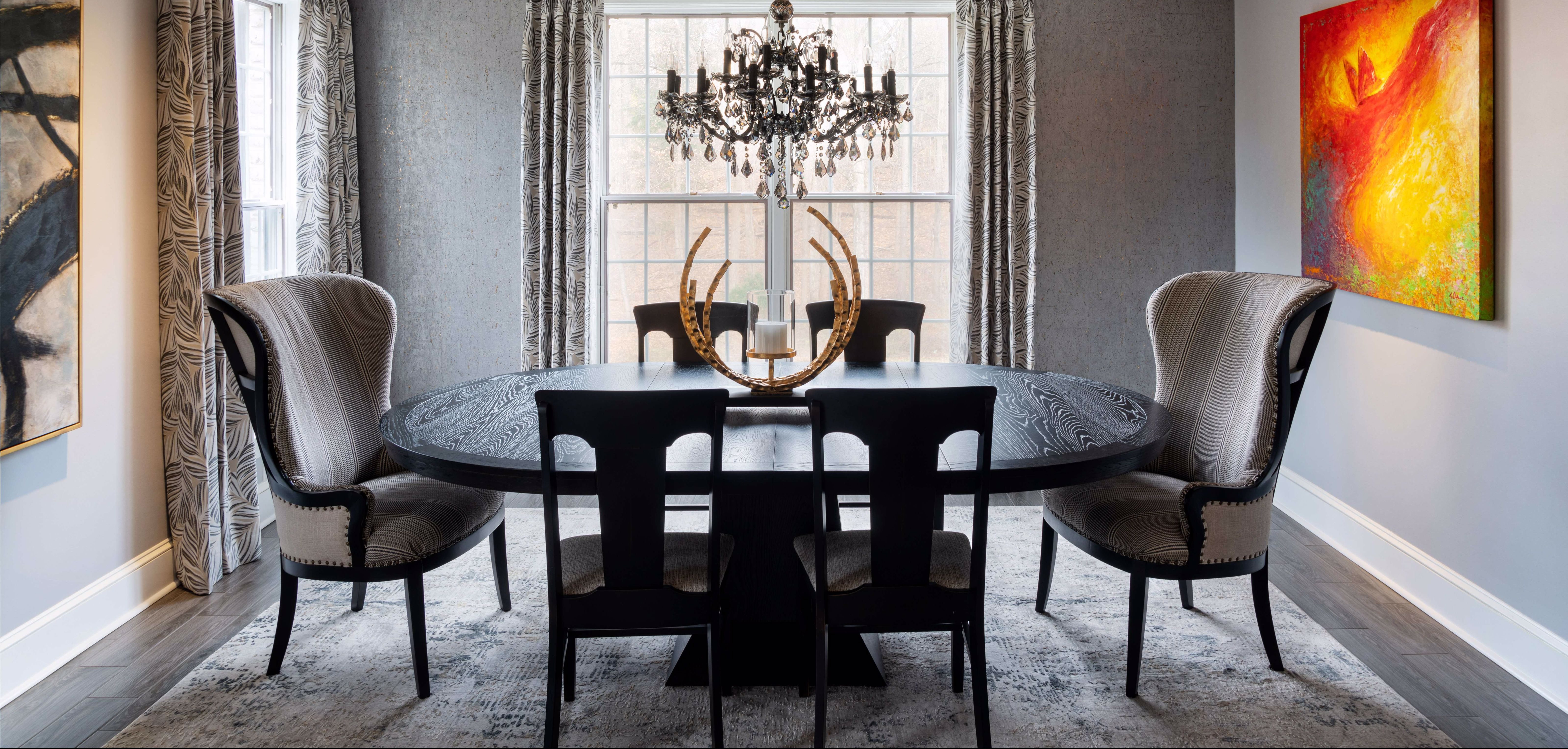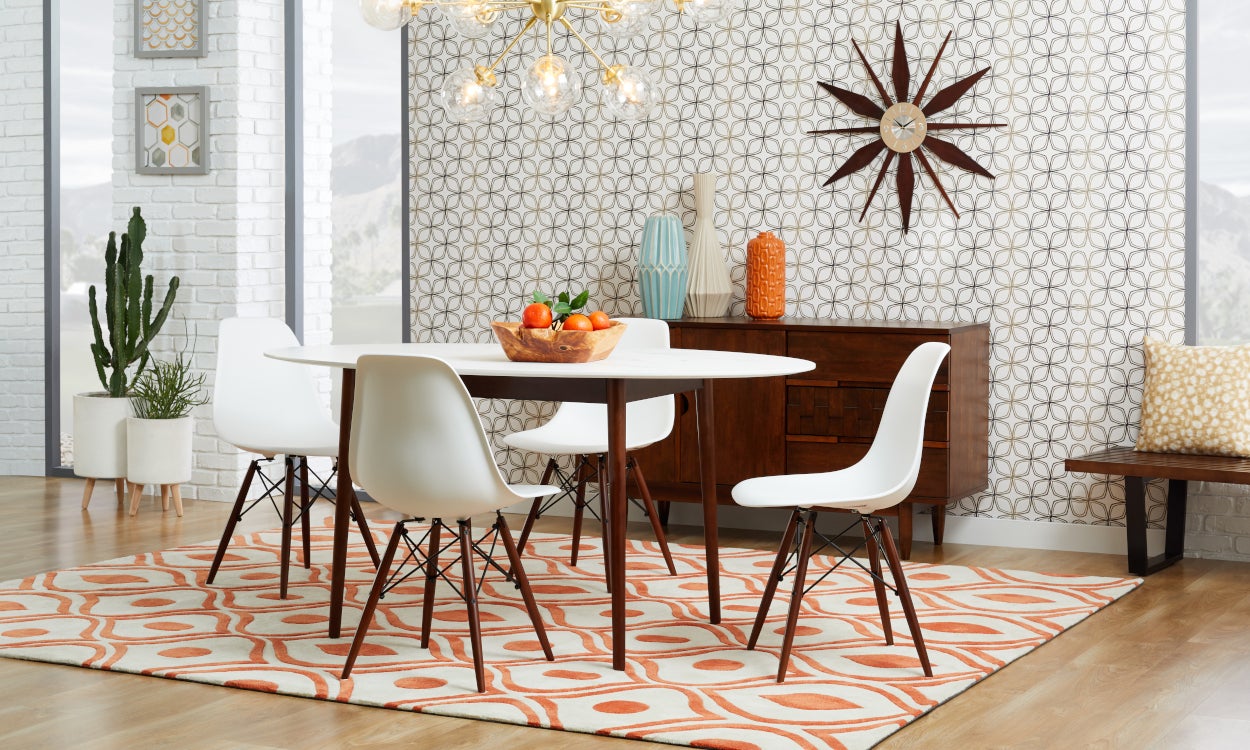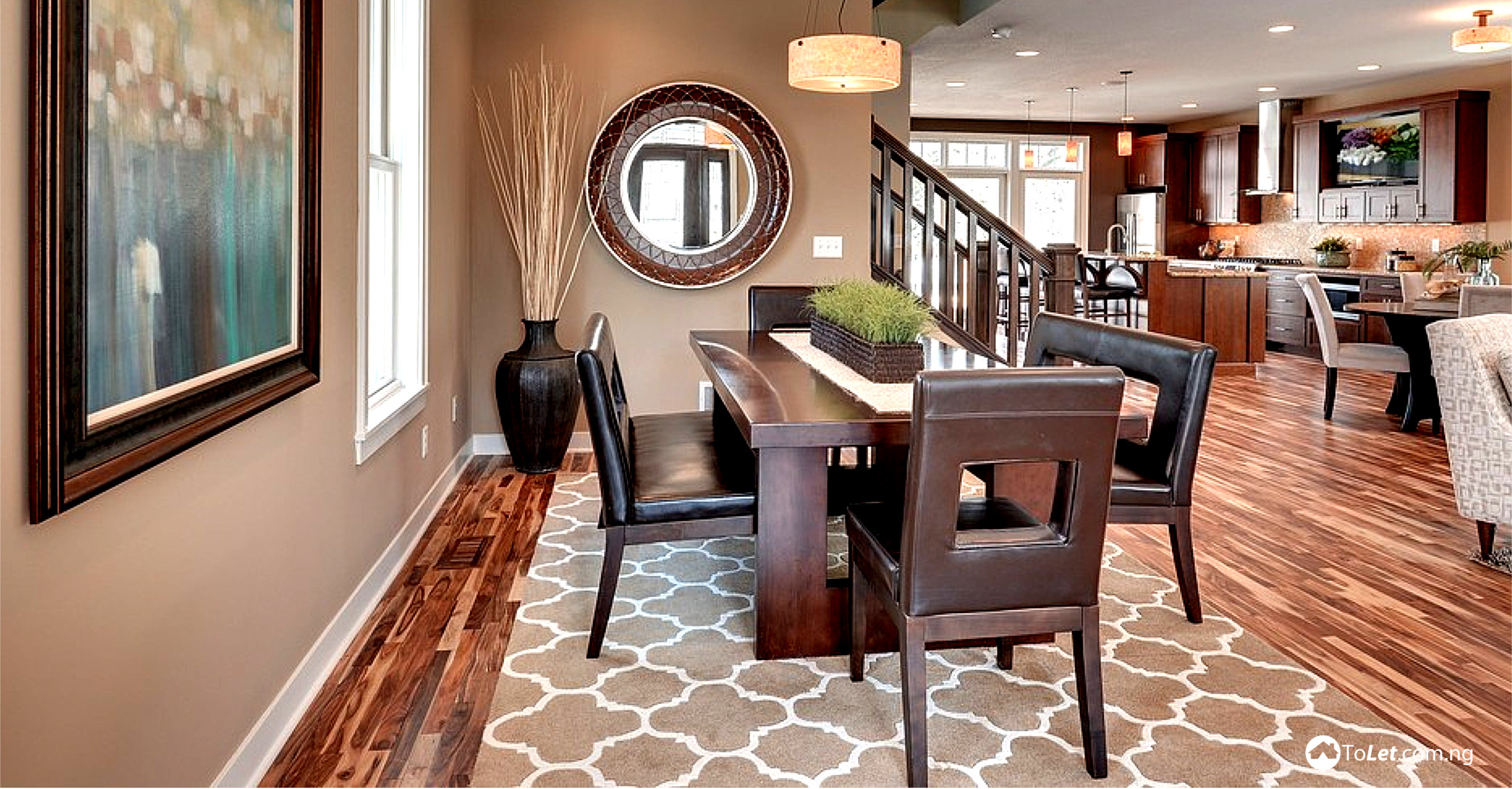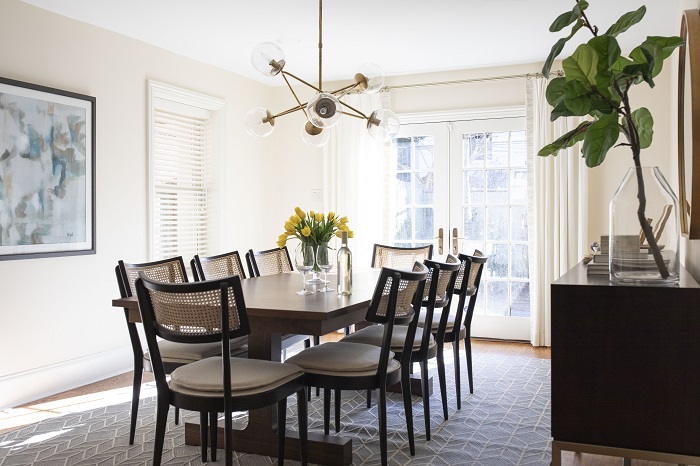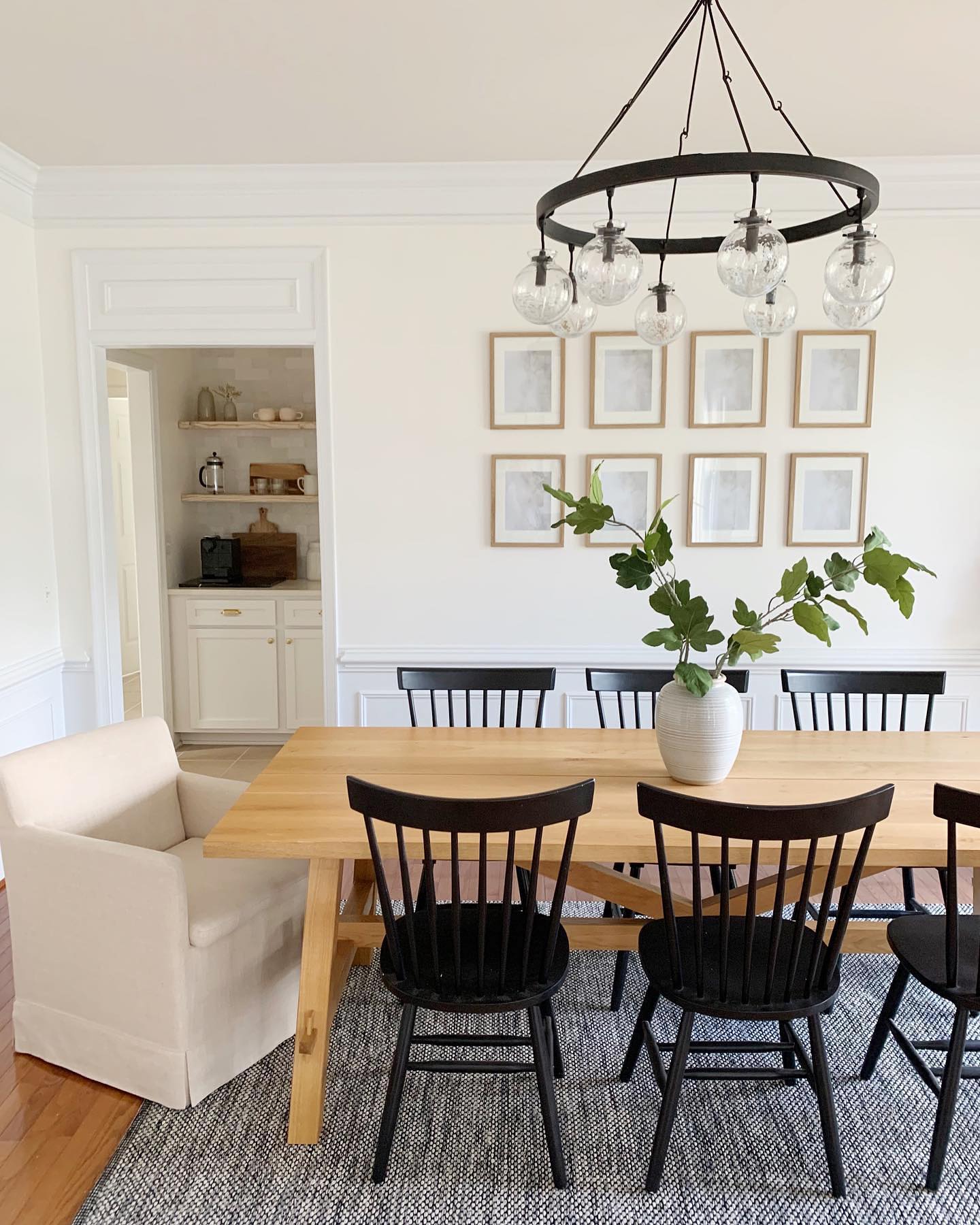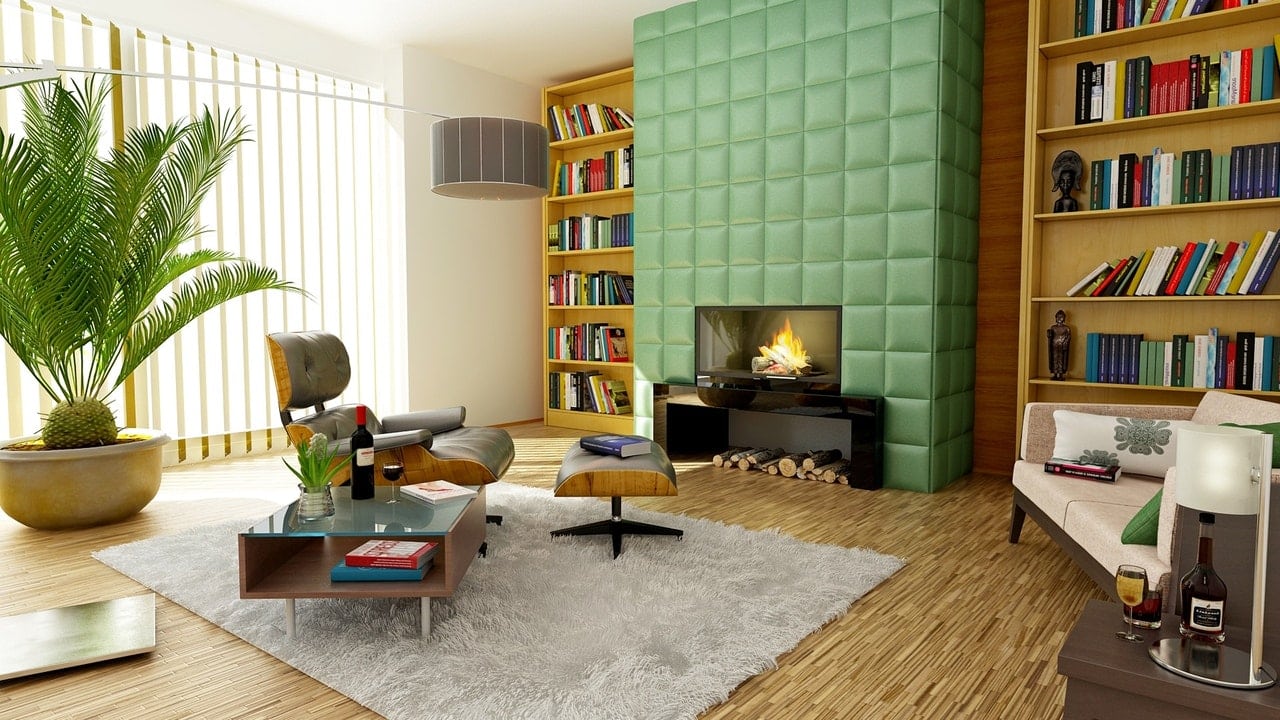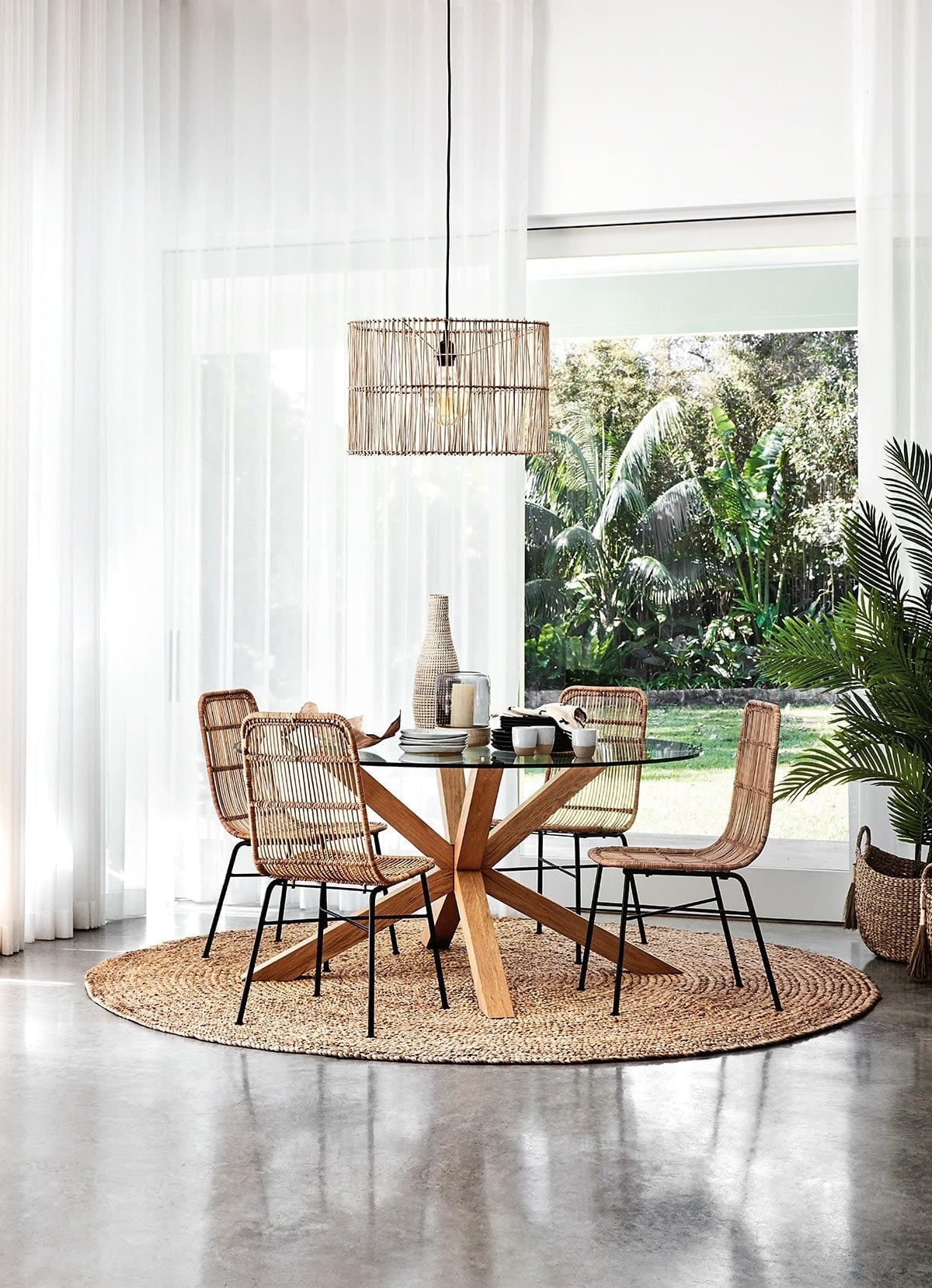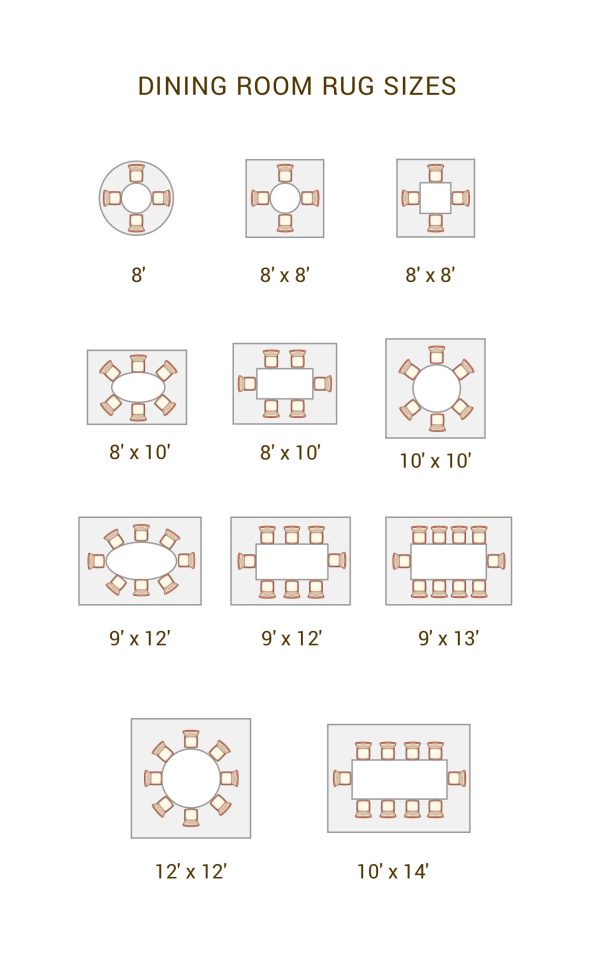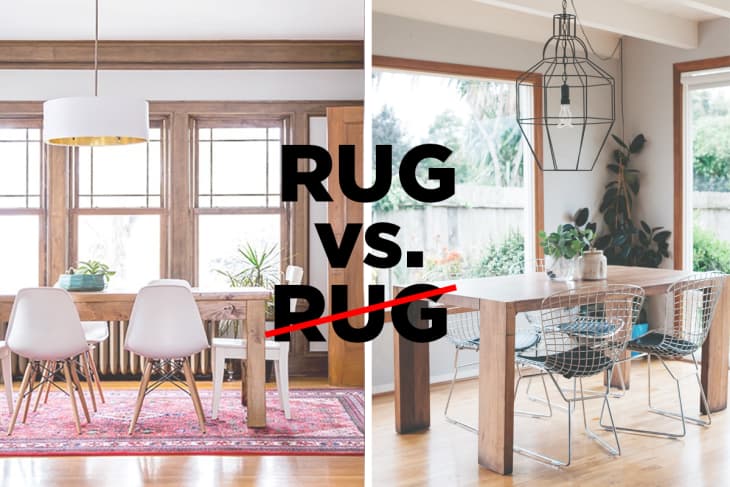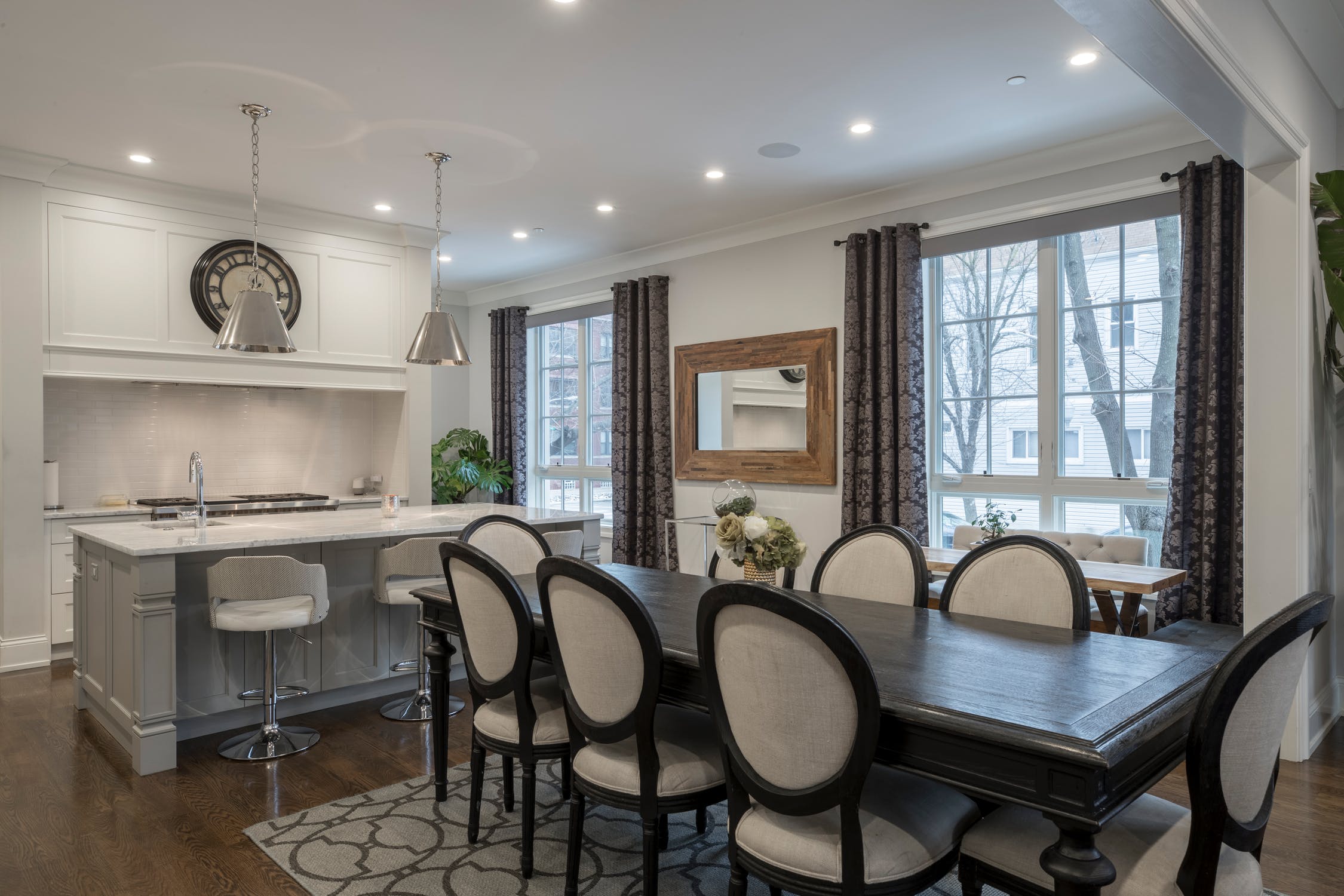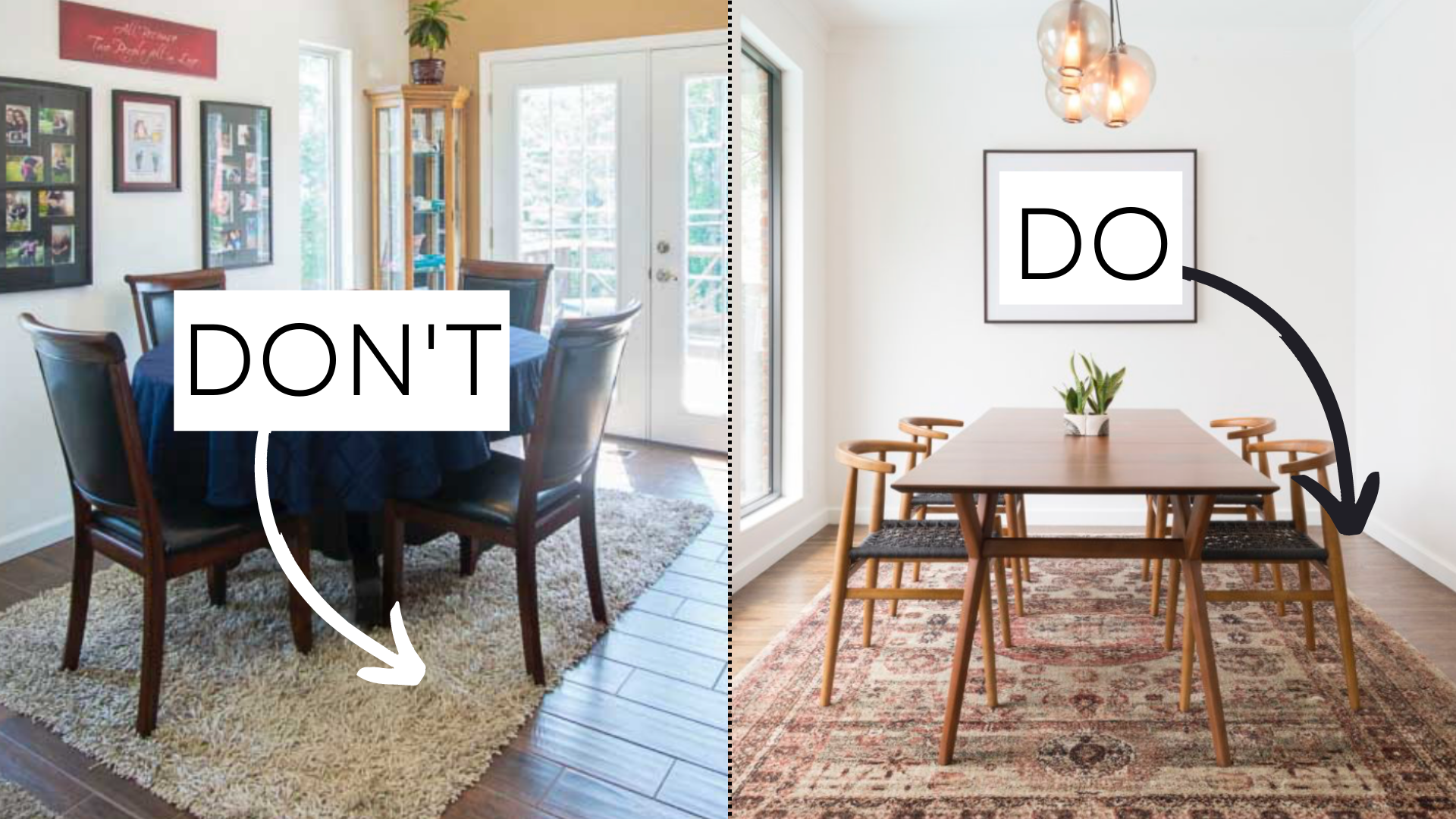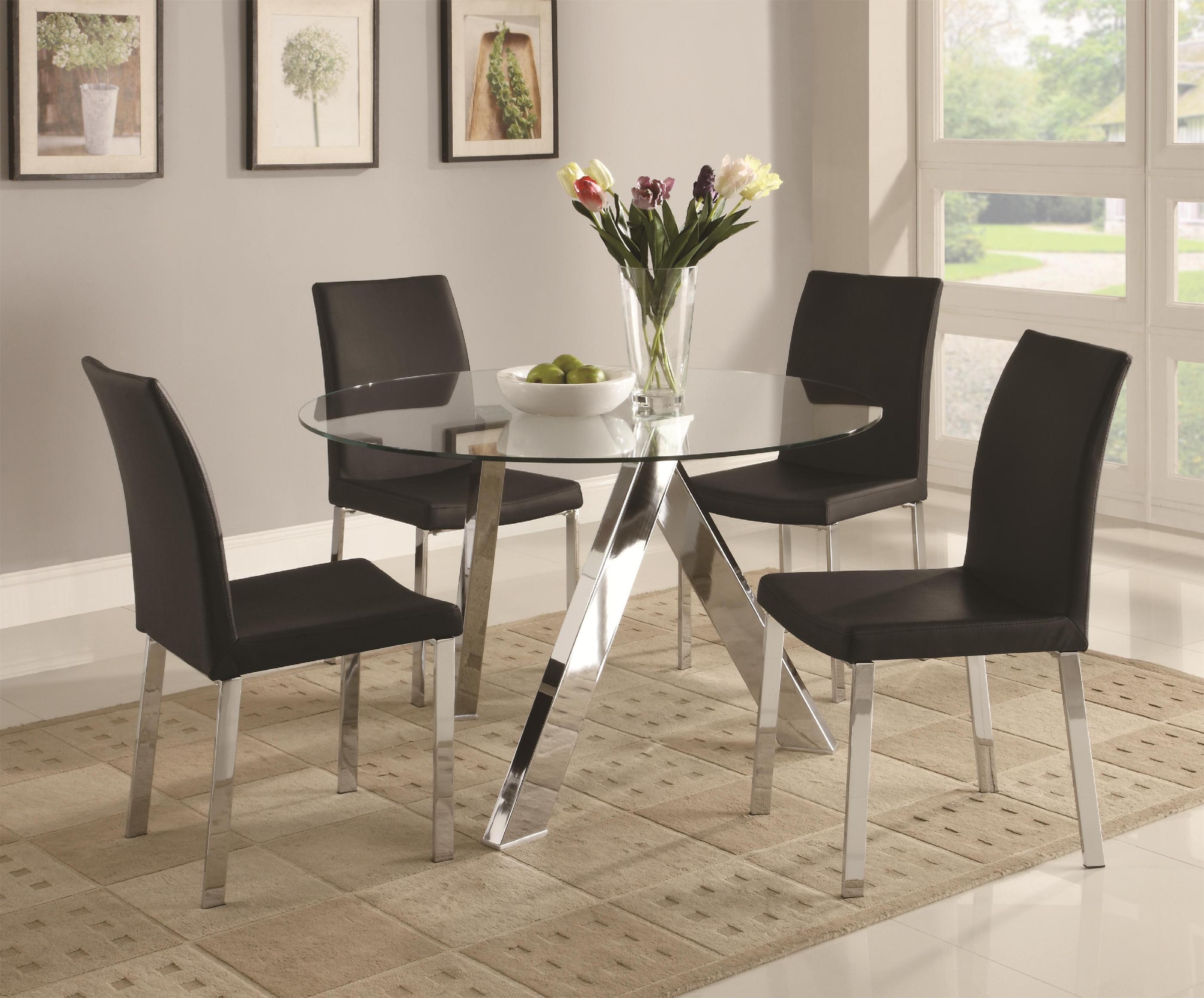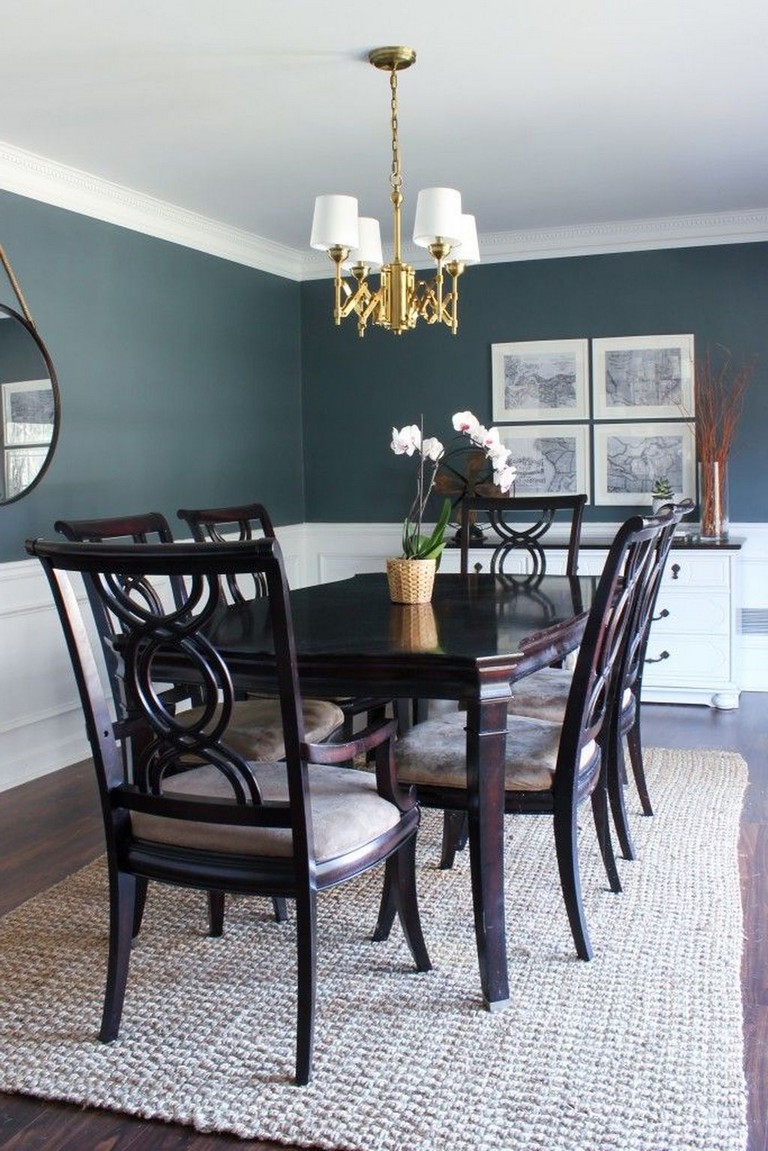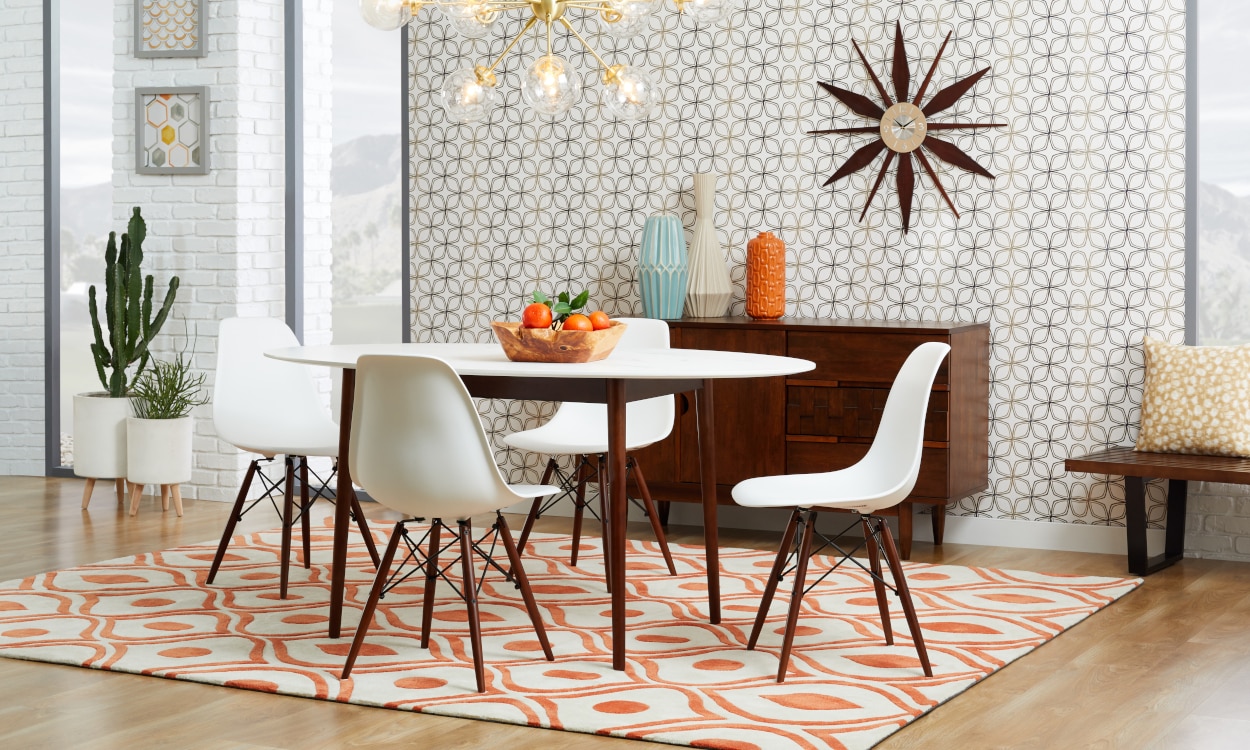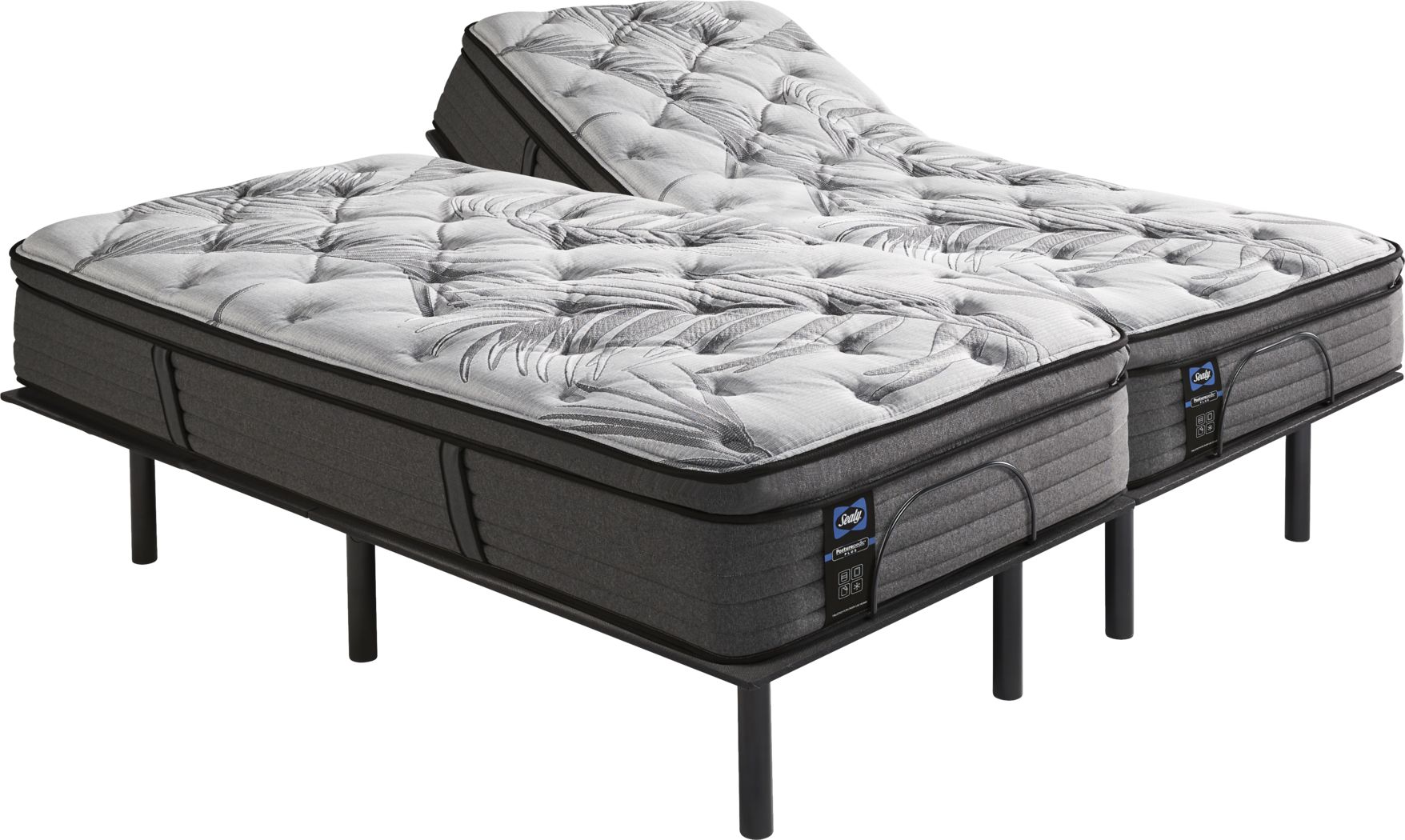Rug Under Dining Room Table: The Perfect Addition to Your Dining Space
Adding a rug under your dining room table can completely transform the look and feel of your dining space. Not only does it add a pop of color and texture, but it also provides practical benefits such as protecting your floors and dampening noise from chairs scraping against the floor. If you're considering adding a rug under your dining room table, here are 10 reasons why it's a great idea.
Dining Room Rug Ideas: Find Your Perfect Match
When it comes to choosing a rug for your dining room, the options are endless. From traditional patterns to bold colors, there is a rug out there that will complement your dining room décor perfectly. Consider the overall style of your dining room and choose a rug that will add to its aesthetic. For a modern dining room, choose a geometric or abstract rug, while a traditional dining room may benefit from a more classic Persian-style rug.
Best Rug for Dining Room: Size Matters
One of the most important factors to consider when choosing a rug for your dining room is the size. The rug should be large enough to cover the area under the table and chairs, with at least 24 inches of extra space on all sides. This allows enough room for chairs to be pulled out without falling off the rug. A good rule of thumb is to measure your dining table and add 4 feet to the length and width for the ideal rug size.
Dining Room Rug Size: A Guide to Finding the Perfect Fit
So, what size rug should you get for your dining room? As mentioned, the rug should be large enough to fit under the table and chairs, but it should also be proportionate to the size of your dining room. A small rug in a large dining room can make the space feel disjointed, while a large rug in a small dining room can make the space feel cramped. Consider the size of your dining room and choose a rug that will complement it.
Choosing a Rug for Dining Room: Style and Functionality
When choosing a rug for your dining room, it's important to consider both style and functionality. While the rug should add to the overall look of your dining room, it should also be practical for everyday use. Look for a rug with a low pile or flatweave, as these are easier to clean and less likely to trap crumbs or spills. Additionally, consider the material of the rug – a durable and stain-resistant material, such as wool or polypropylene, is ideal for high-traffic dining areas.
Dining Room Rug Placement: Finding the Perfect Spot
Once you have chosen the perfect rug for your dining room, it's important to properly place it for maximum impact. The rug should be centered under the dining table, with an equal amount of rug visible on all sides. This creates a balanced and cohesive look in the room. If your dining table is not centered in the room, make sure the rug is centered in relation to the table, not the room itself.
Rug Under Dining Table Size: A Big Impact in a Small Space
If you have a smaller dining room, you may be hesitant to add a rug under your dining table, fearing it will make the space feel even smaller. However, the right rug can actually make a small dining room feel larger. Choose a light-colored rug with a simple pattern to create the illusion of more space. Additionally, make sure the rug is not too large for the room – it should fit comfortably under the table and chairs without overwhelming the space.
Dining Room Rug Rules: Breaking the Rules for a Unique Look
While there are some general guidelines for choosing a rug for your dining room, don't be afraid to break the rules and go for a more unique look. For example, instead of choosing a traditional rectangular rug, opt for a round rug for a more interesting and unexpected touch. Additionally, don't be afraid to mix and match patterns and colors – just make sure they complement each other and don't clash.
Dining Room Rug Shapes: Round, Square, or Rectangle?
When it comes to rug shapes, there are several options to choose from. The most common shape for a dining room rug is rectangular, as it typically fits best under a rectangular dining table. However, if you have a round dining table, consider a round rug for a more cohesive look. Square rugs can also work well in a square dining room, or as a contrast to a round or rectangular dining table.
Dining Room Rug Material: Durability and Comfort
Last but not least, consider the material of your dining room rug. As mentioned, a durable and stain-resistant material is ideal for a high-traffic area like a dining room. However, you also want to make sure the rug is comfortable underfoot, especially if you plan on spending a lot of time sitting at the dining table. Natural materials like wool or cotton are soft and comfortable, while synthetic materials like polypropylene are more durable and easy to clean.
In conclusion, adding a rug under your dining room table is not only a good idea, but it can completely transform the look and feel of your dining space. With the right size, placement, and style, a rug can add warmth, texture, and practical benefits to your dining room. So go ahead and choose the perfect rug for your dining room – your feet (and your floors) will thank you.
Benefits of Adding a Rug Under Your Dining Room Table
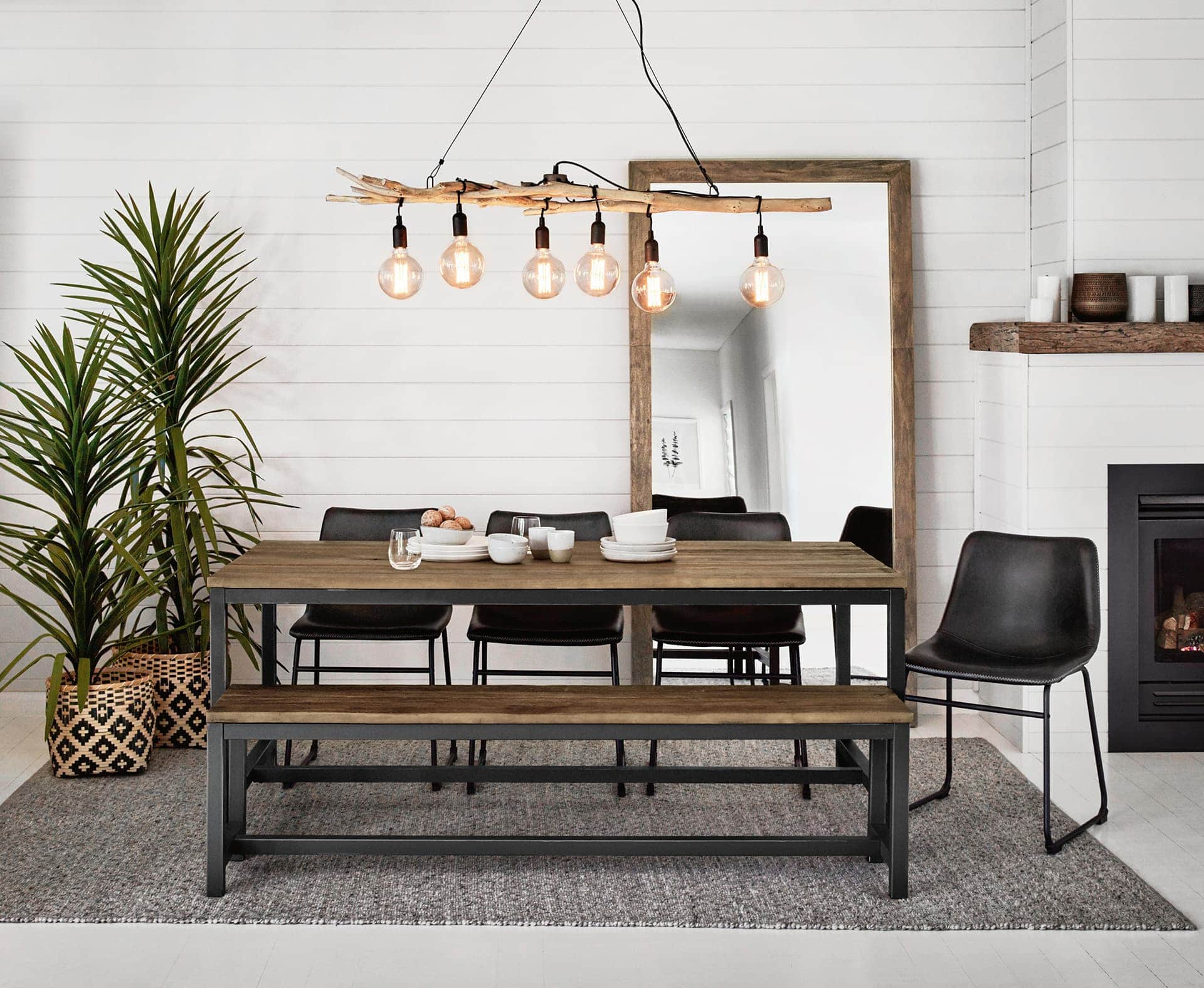
1. Adds Visual Interest
 Adding a rug under your dining room table can instantly elevate the overall look and feel of the space. It adds a layer of texture and color that can tie together the entire room. Plus, with so many rug options available, you can choose one that complements your existing décor or adds a pop of color for a bold statement.
Adding a rug under your dining room table can instantly elevate the overall look and feel of the space. It adds a layer of texture and color that can tie together the entire room. Plus, with so many rug options available, you can choose one that complements your existing décor or adds a pop of color for a bold statement.
2. Defines the Space
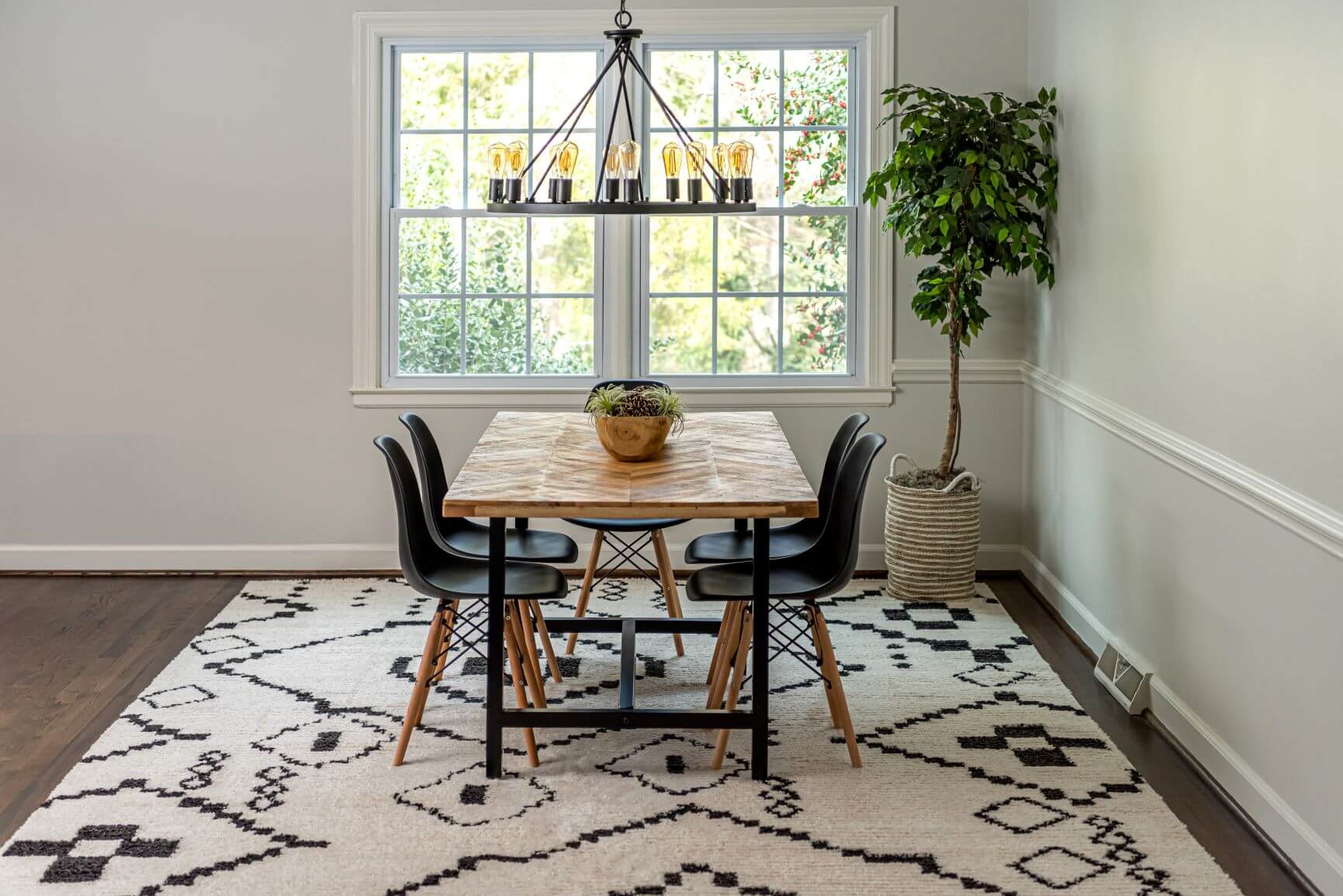 A rug can help define the dining area in an open concept layout, especially if you have a large dining room table. Without a rug, the table may seem like it's floating in the space. But with a rug, the dining area is clearly defined and creates a cozy and inviting atmosphere.
A rug can help define the dining area in an open concept layout, especially if you have a large dining room table. Without a rug, the table may seem like it's floating in the space. But with a rug, the dining area is clearly defined and creates a cozy and inviting atmosphere.
3. Protects Your Floors
 Dining rooms are high traffic areas, and the constant movement of chairs and people can cause wear and tear on your floors. By placing a rug under your dining room table, you not only add a layer of protection, but you also reduce noise and prevent scratches and scuffs on your floors.
Dining rooms are high traffic areas, and the constant movement of chairs and people can cause wear and tear on your floors. By placing a rug under your dining room table, you not only add a layer of protection, but you also reduce noise and prevent scratches and scuffs on your floors.
4. Comfort Underfoot
 Let's face it, dining room chairs are not always the most comfortable to sit on, especially for extended periods. A rug can add a layer of cushioning and make your dining experience more comfortable. Plus, it's much nicer to step onto a soft rug than onto a cold, hard floor.
Let's face it, dining room chairs are not always the most comfortable to sit on, especially for extended periods. A rug can add a layer of cushioning and make your dining experience more comfortable. Plus, it's much nicer to step onto a soft rug than onto a cold, hard floor.
5. Easy to Clean
:max_bytes(150000):strip_icc()/choose-dining-room-rug-1391112-hero-4206622634654a6287cc0aff928c1fa1.jpg) Many people shy away from adding a rug under their dining room table because of the fear of spills and stains. However, with the right materials and proper care, rugs can be easy to clean and maintain. Opt for a rug with a low pile or one that is stain-resistant for added peace of mind.
Many people shy away from adding a rug under their dining room table because of the fear of spills and stains. However, with the right materials and proper care, rugs can be easy to clean and maintain. Opt for a rug with a low pile or one that is stain-resistant for added peace of mind.
Conclusion
 In conclusion, adding a rug under your dining room table is not only a good idea but a great one. It adds visual interest, defines the space, protects your floors, adds comfort, and is easy to clean. So why not take the plunge and add a rug to your dining room? Your space will thank you.
In conclusion, adding a rug under your dining room table is not only a good idea but a great one. It adds visual interest, defines the space, protects your floors, adds comfort, and is easy to clean. So why not take the plunge and add a rug to your dining room? Your space will thank you.




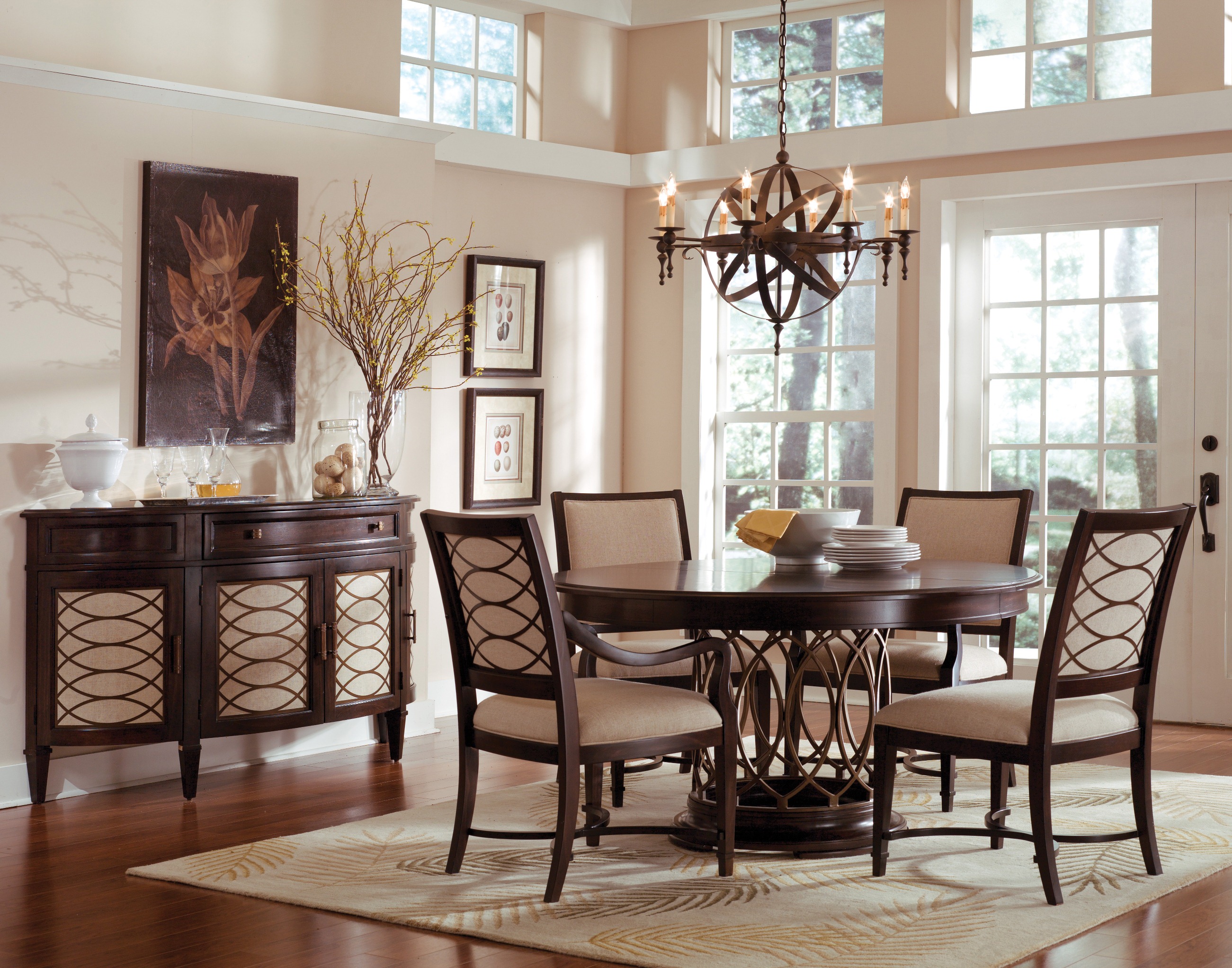
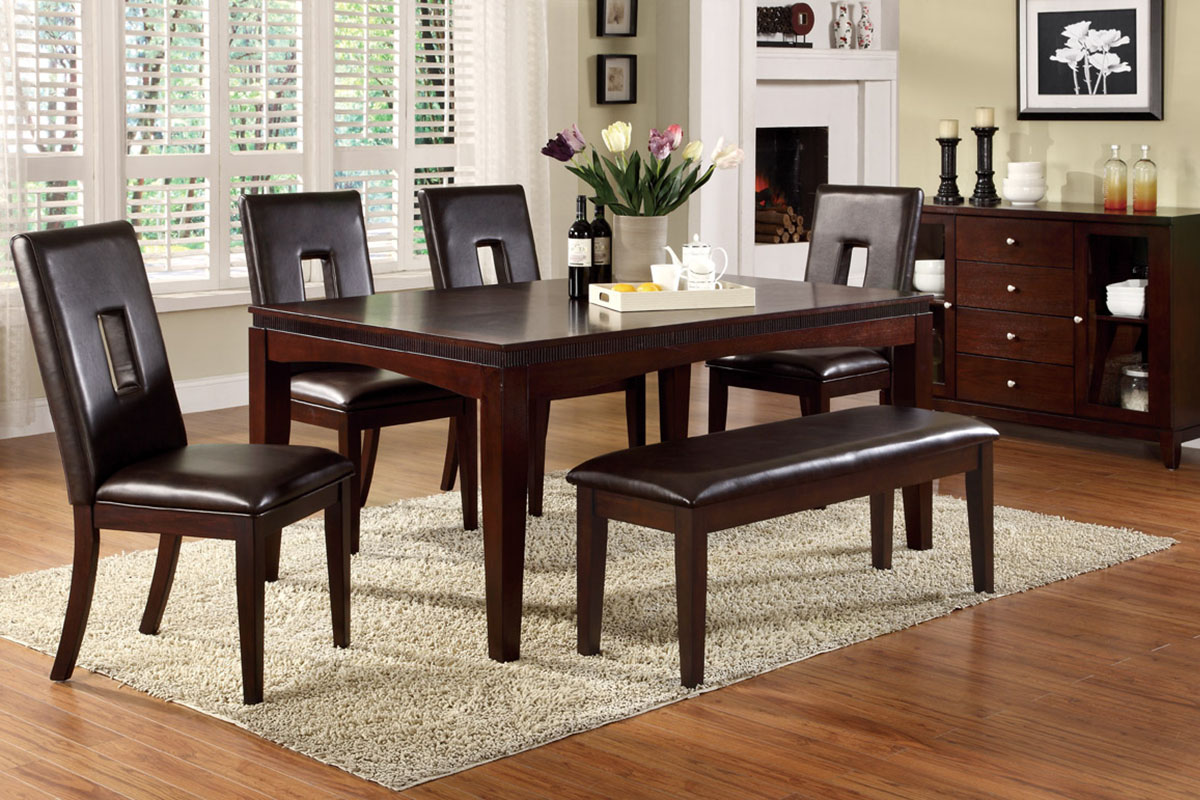
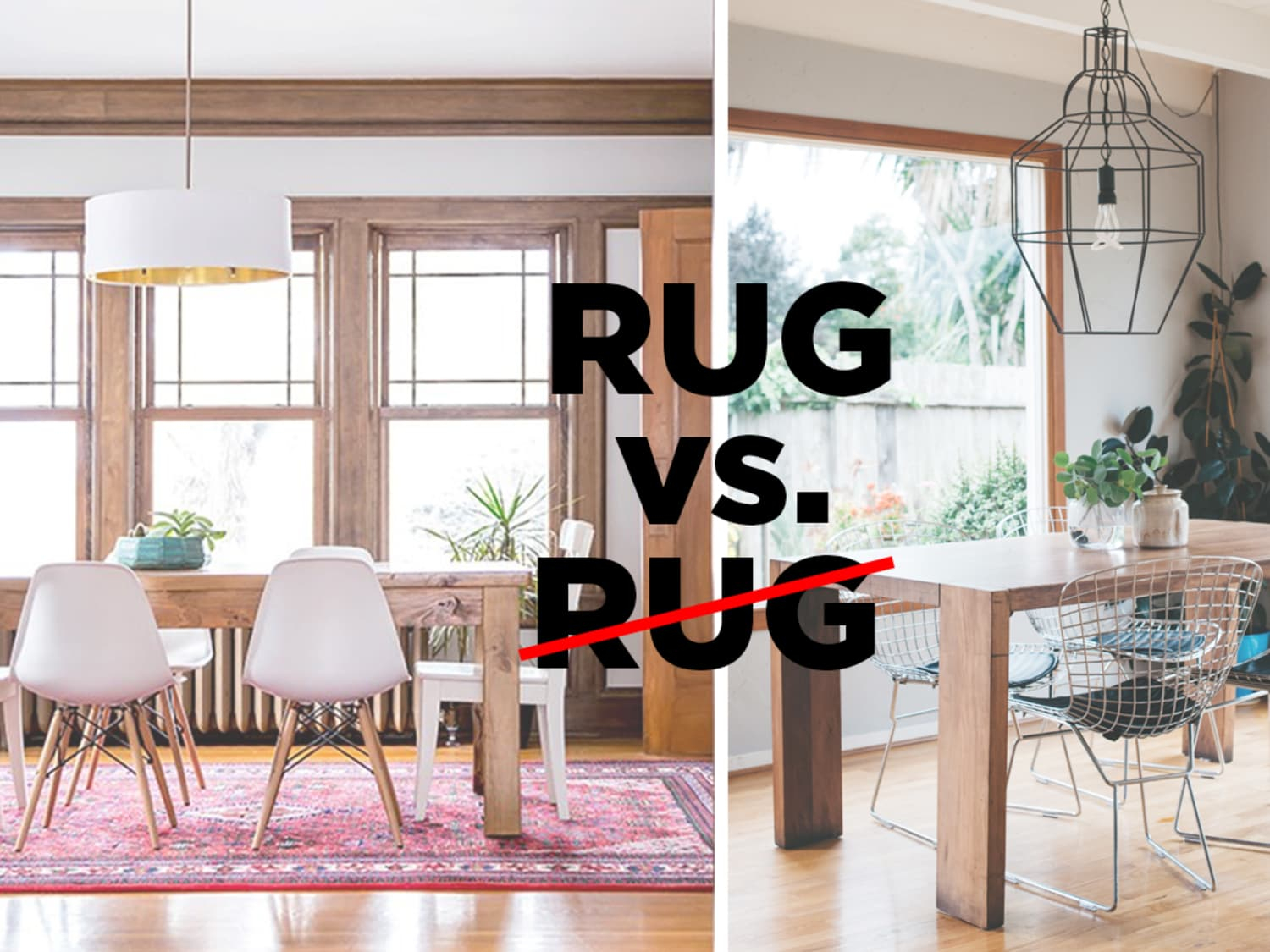

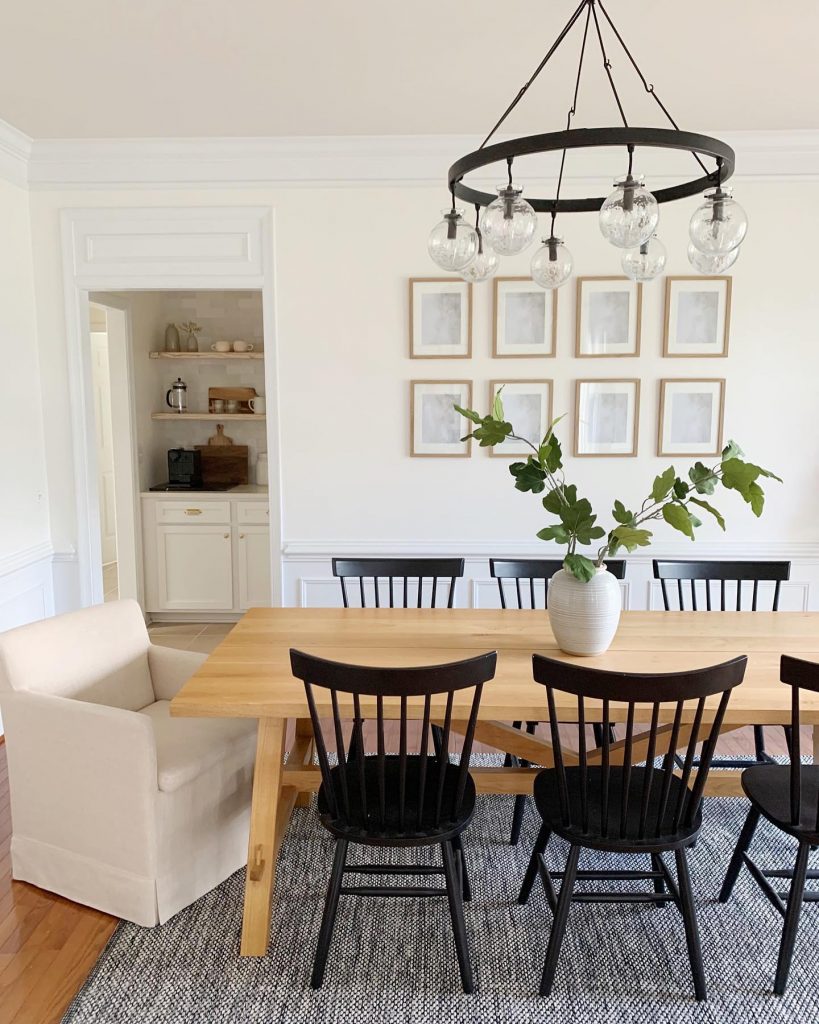


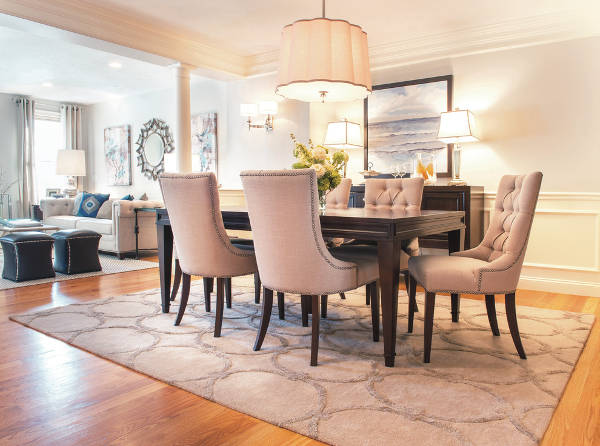

/choose-dining-room-rug-1391112-hero-4206622634654a6287cc0aff928c1fa1.jpg)

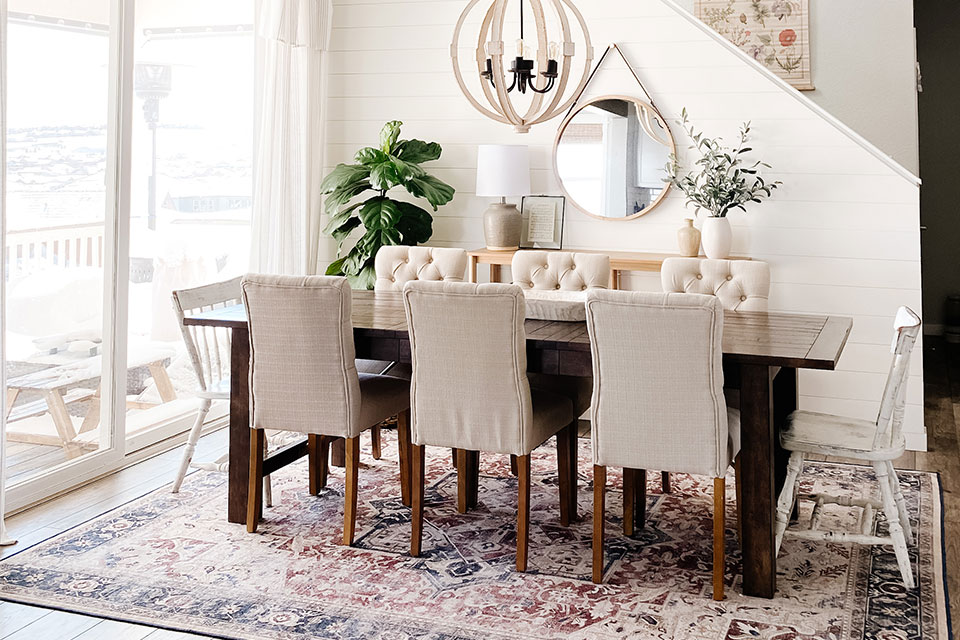


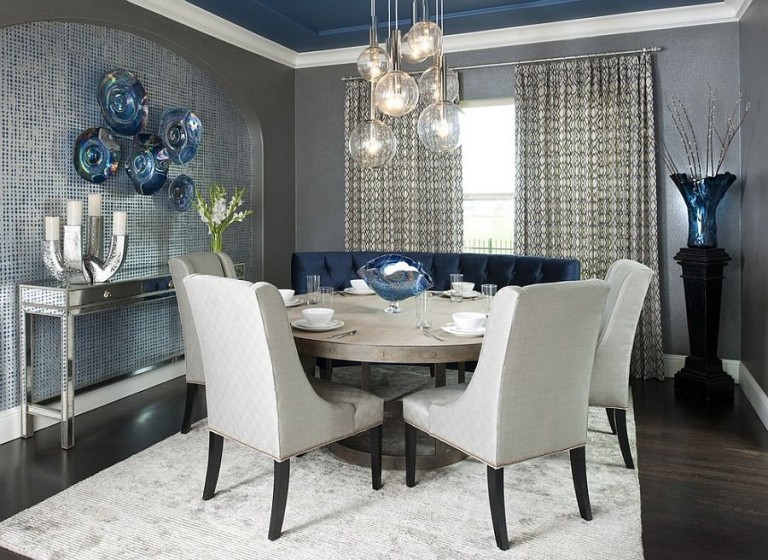




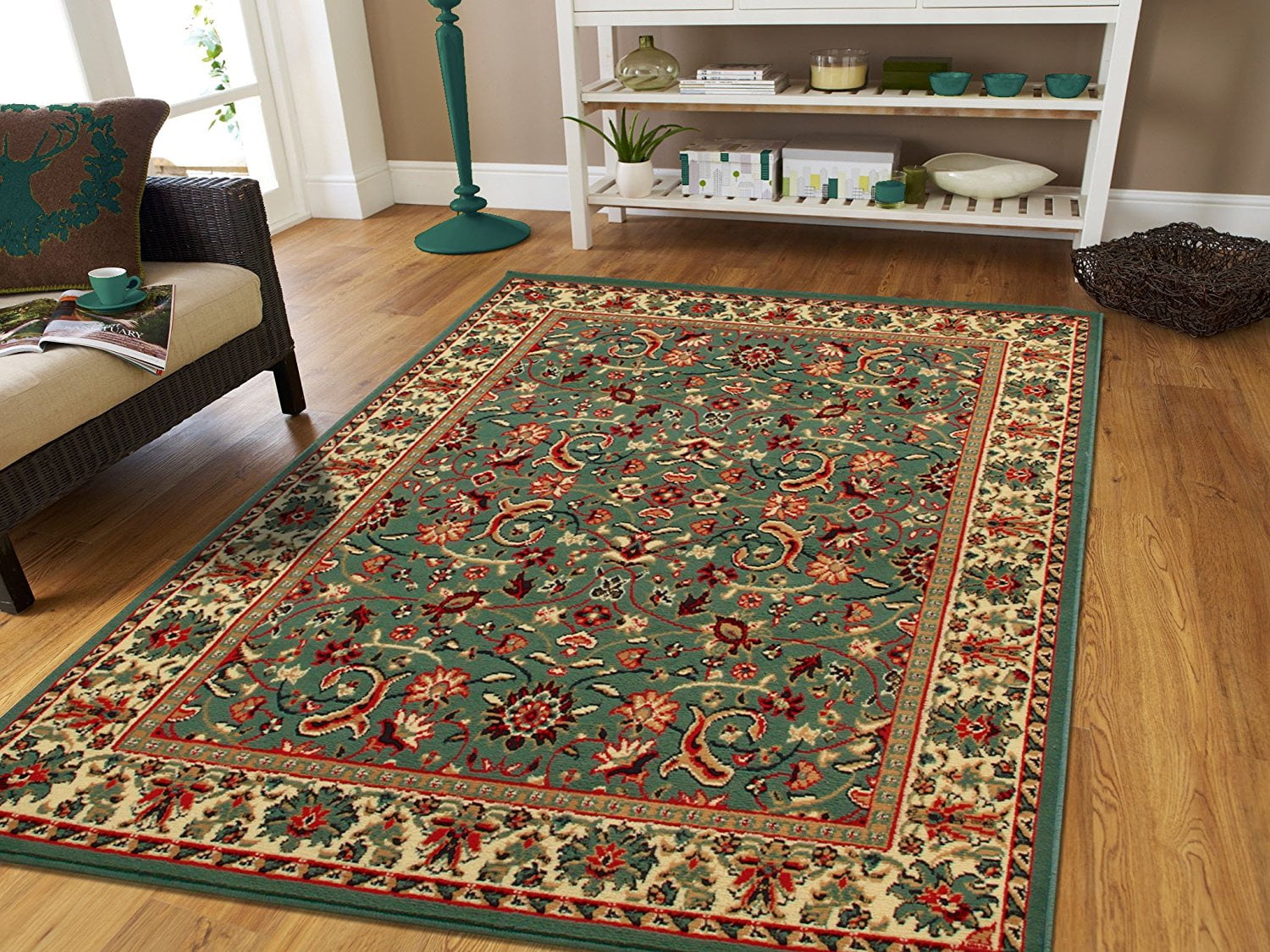
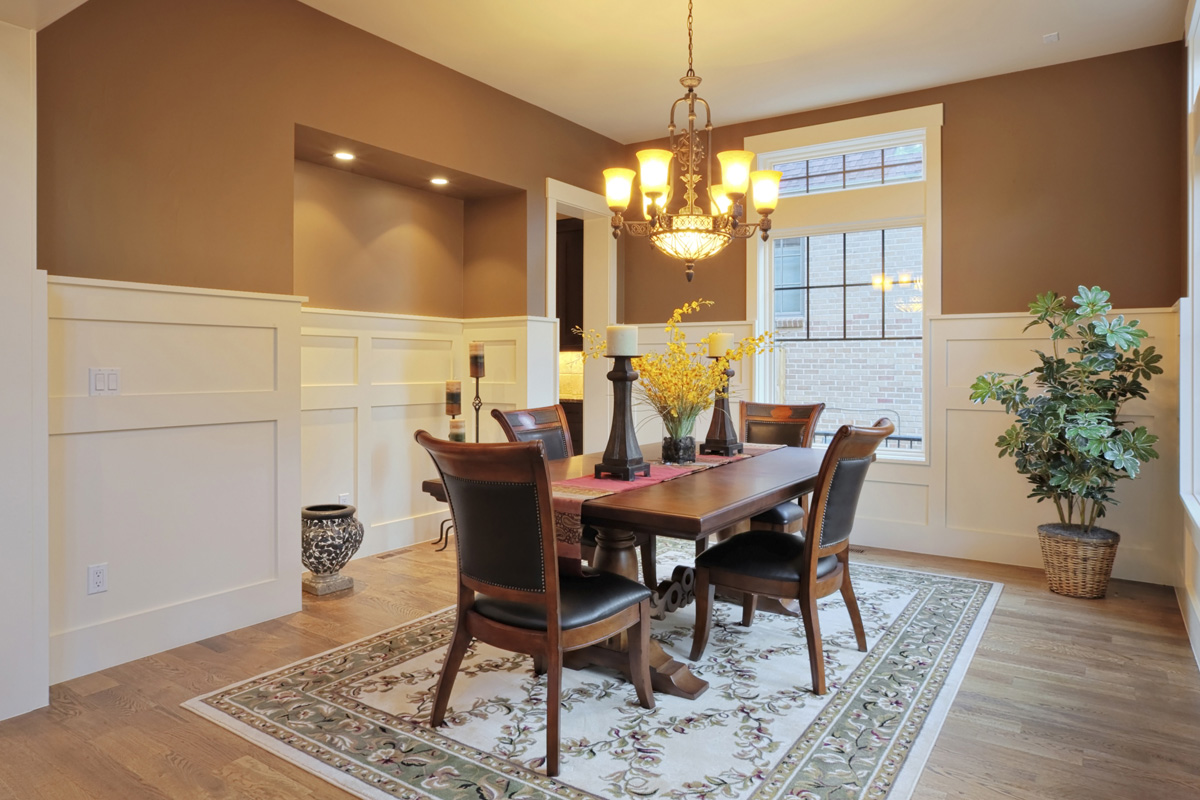


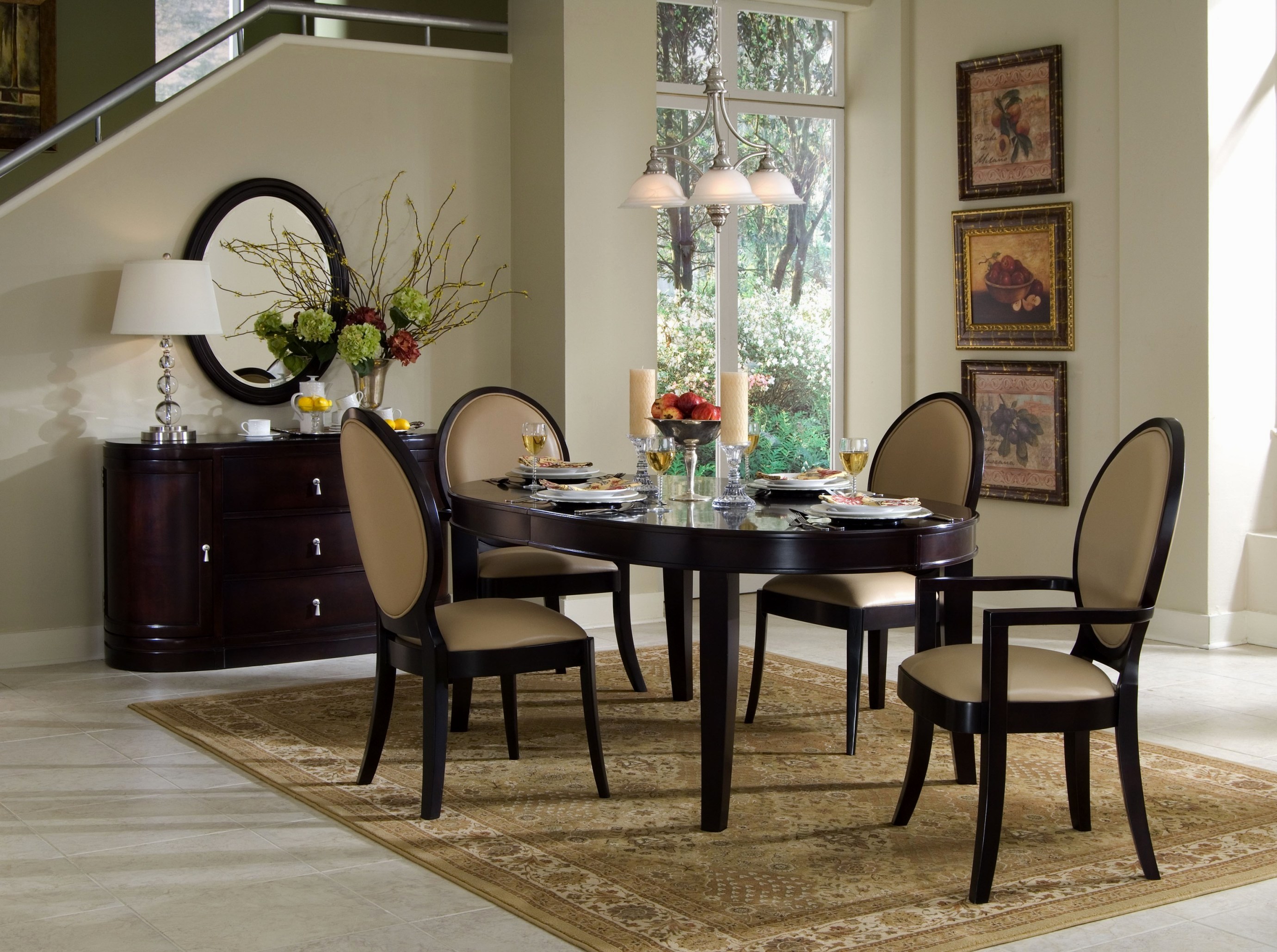
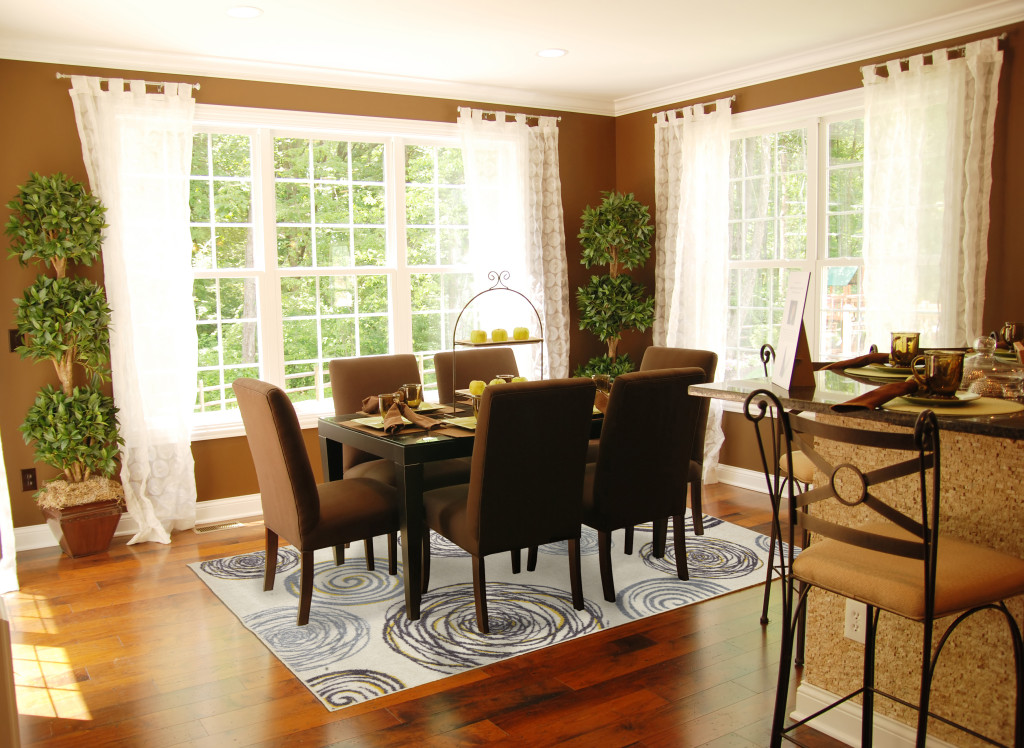
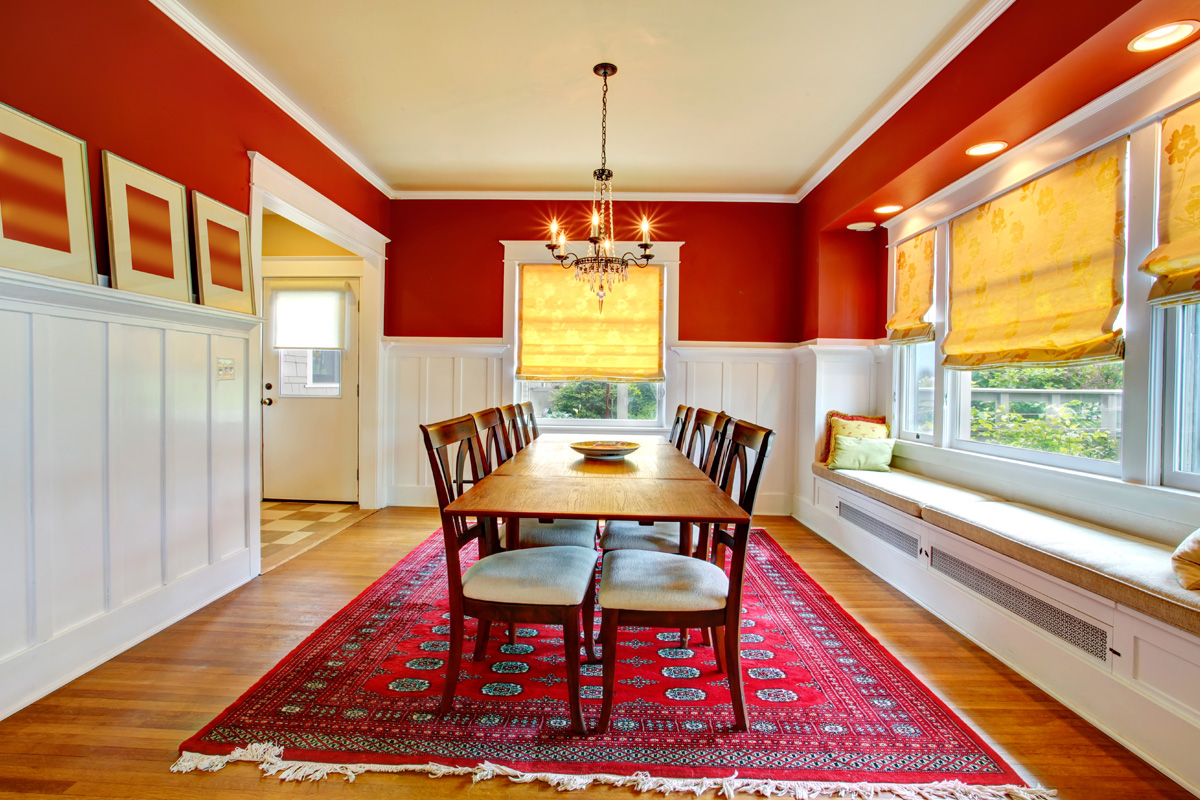


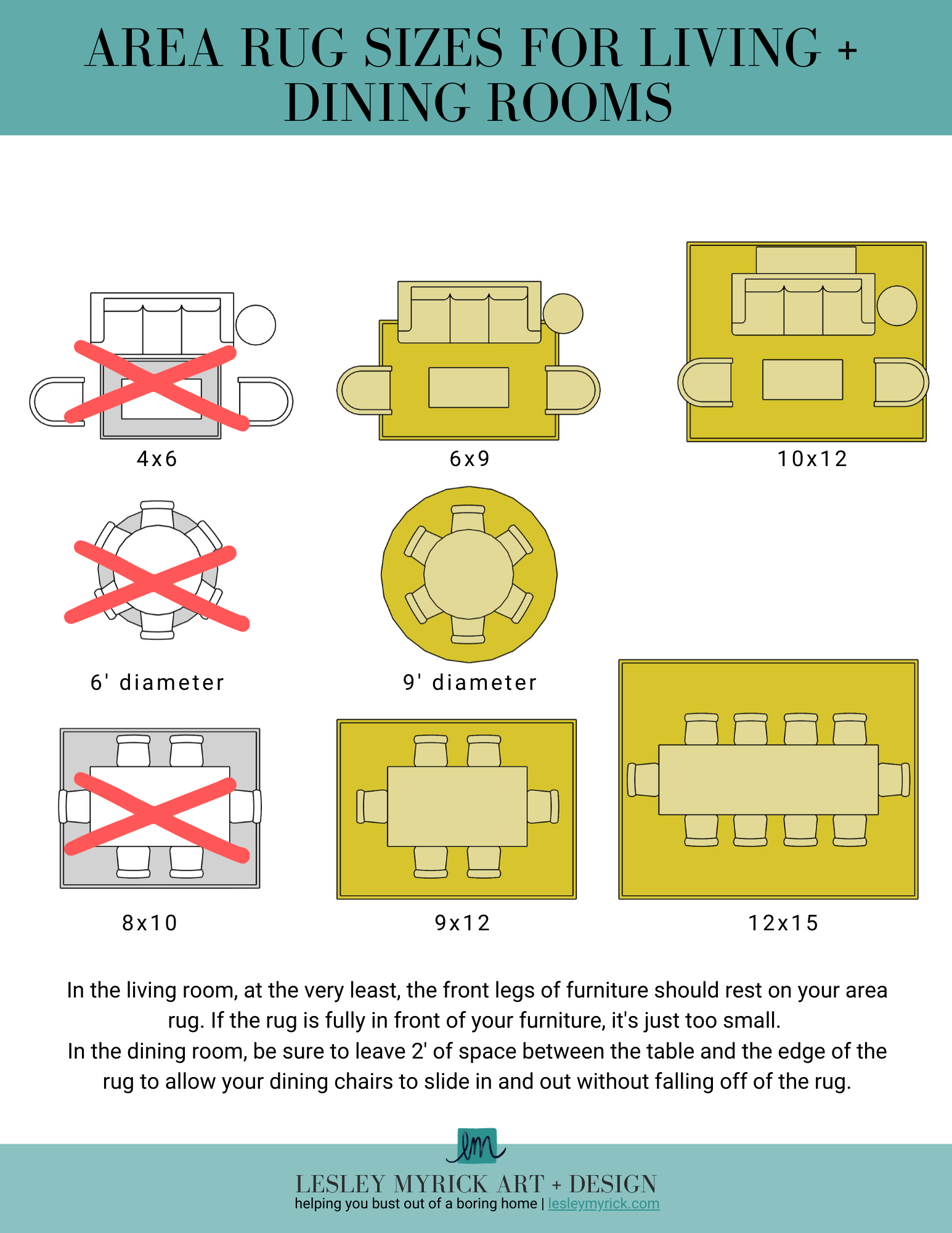
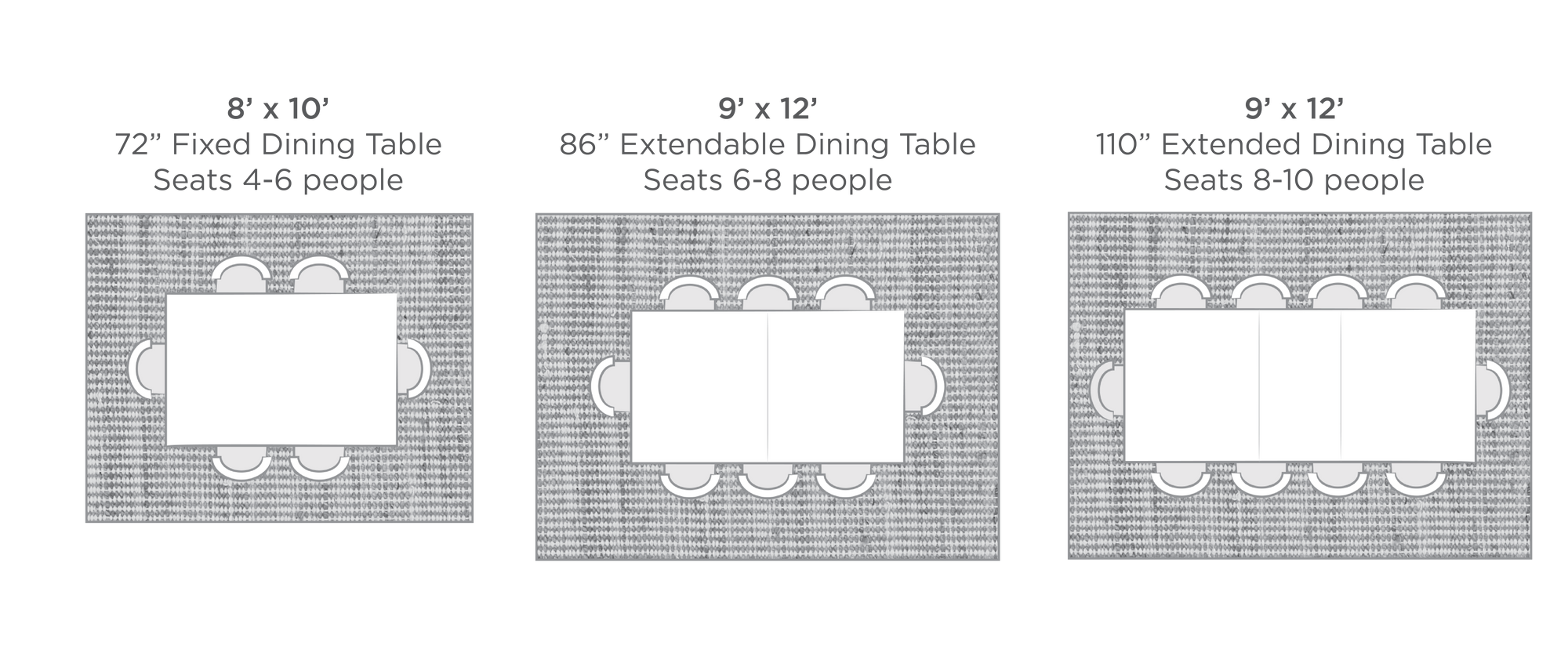
:max_bytes(150000):strip_icc()/DiningRoomwithRug-3034f93d3a964cc8b9ba8b690bebddfb.jpg)
